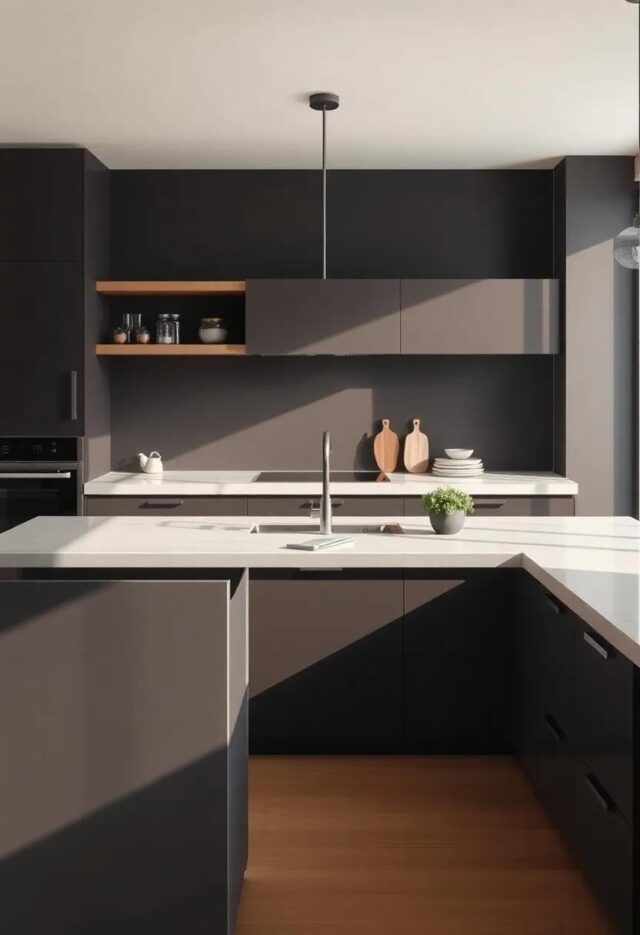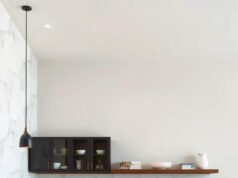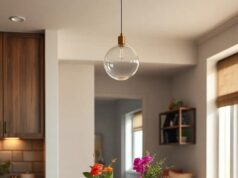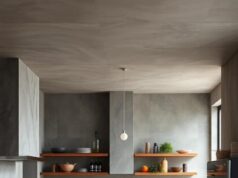In the heart of every home, the kitchen serves as more than just a place to prepare meals; it is a canvas for creativity, connection, and comfort. As design trends evolve, a captivating aesthetic has emerged—a sultry realm where shadows dance with light, and rich hues evoke a sense of intimacy. Welcome to the moody kitchen aesthetic, a style that invites you to embrace the enigmatic allure of darker tones, layered textures, and striking contrasts. In this article,we will explore the ideology behind this captivating trend,offering insights and inspiration to transform your space into a culinary retreat that reflects both warmth and sophistication. Whether you are an aspiring chef or a casual cook,join us on a journey to discover how the moody kitchen can breathe new life into your home,inviting both functionality and elegance into the everyday rituals of cooking and gathering.
Transforming the Color Palette: From Bold Hues to Subtle Shades in your Moody Kitchen
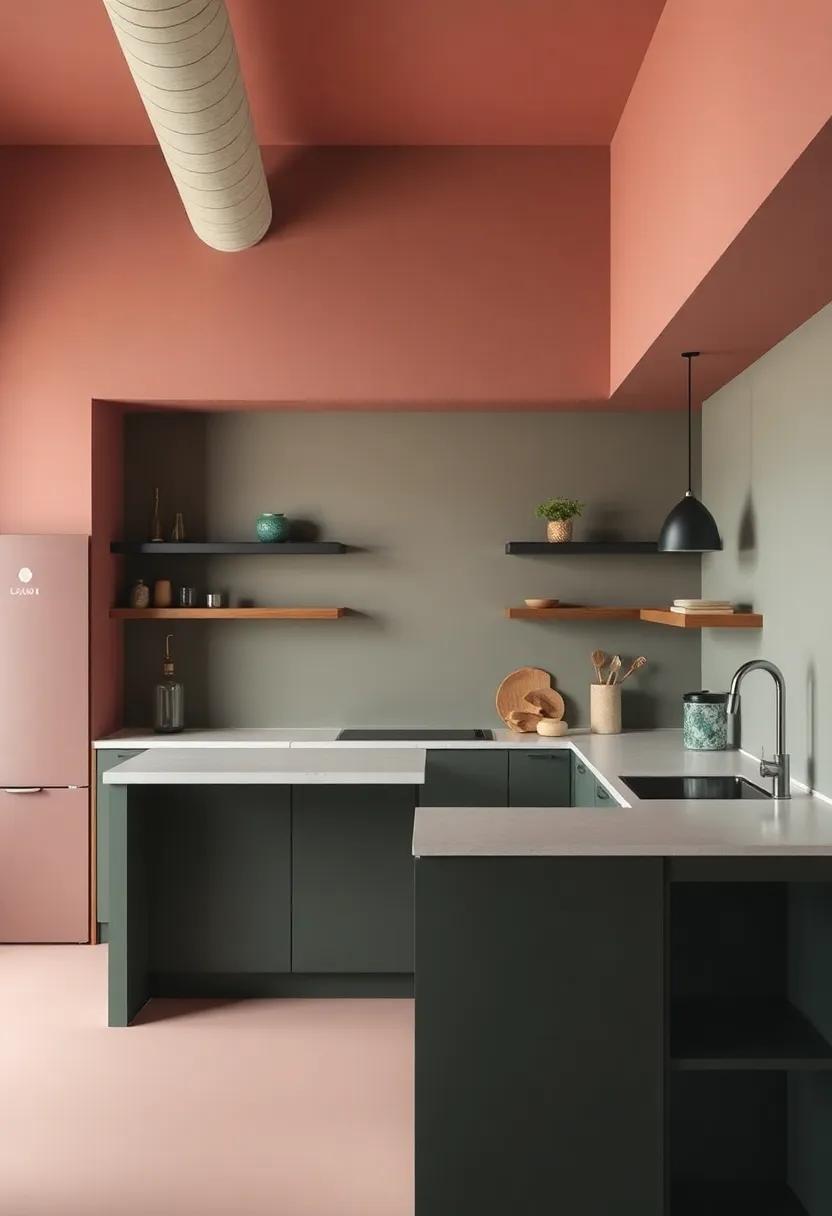
In a moody kitchen, the color palette plays a pivotal role in setting the overall atmosphere. Embracing subtle shades can create a elegant backdrop that balances the bold accents often found in kitchen decor. Consider incorporating tones such as deep charcoal, navy blue, and muted emerald alongside lighter hues, like soft creams or dusty pastels, which create a beautiful contrast and add depth to the space. By carefully selecting and pairing colors, you can craft an engaging visual experiance that feels both inviting and intimate.
To further enhance the moody aesthetic, utilize materials that complement your color choices.Here are some ideas to harmonize your palette:
- Natural Woods: Rich finishes in cabinetry and surfaces can add warmth.
- Metal Accents: Brushed bronze or matte black fixtures can enhance the drama.
- Textured Fabrics: Use soft textiles in muted colors for curtains or cushions to soften bold color contrasts.
By transforming the kitchen color palette from bold hues to subtle shades, you not only create a unique space but also evoke a sense of calmness, inviting creativity and connection among those who gather there.
Creating the Perfect Lighting: Illuminating Your Kitchen’s Enigmatic Charm
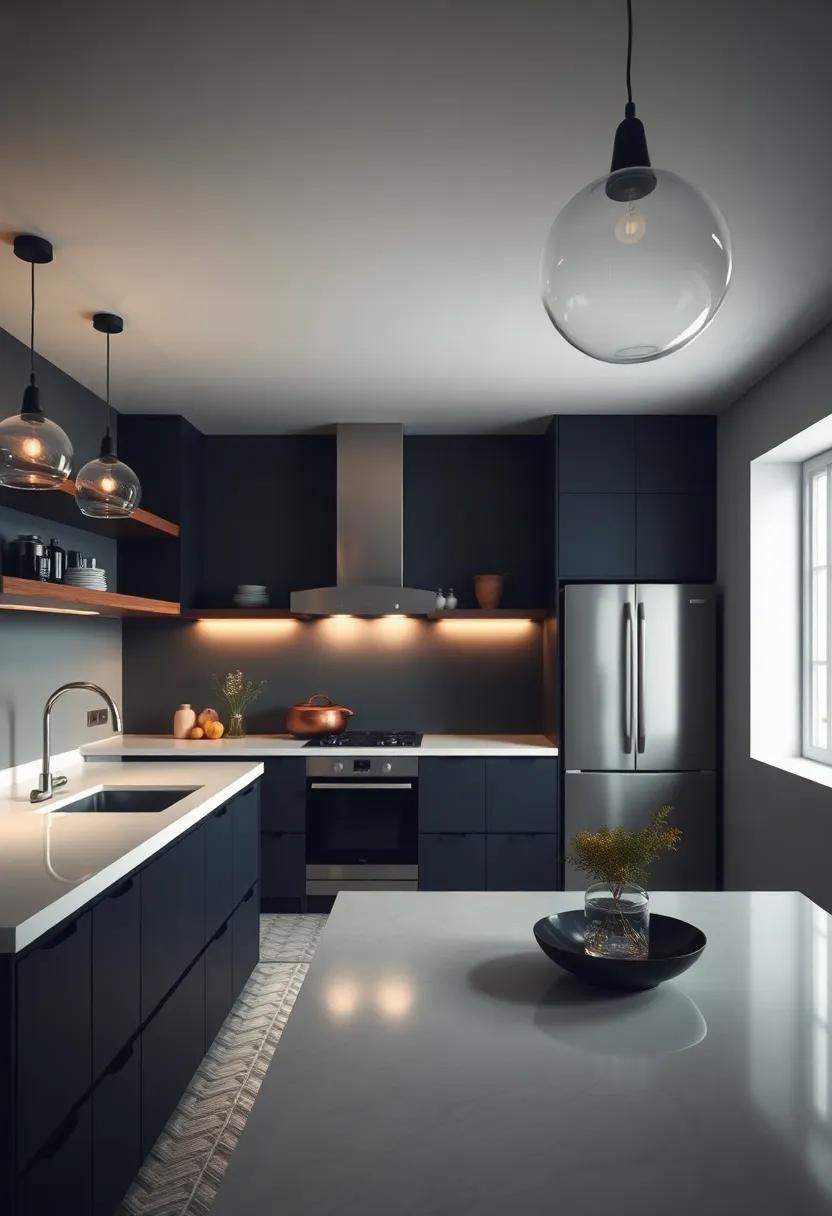
The key to uncovering your kitchen’s enigmatic charm lies in the delicate balance of light and shadow. To achieve this, focus on a layered lighting approach that complements the kitchen’s unique features. incorporate ambient lighting to provide a warm glow that fills the room, accented by task lighting that highlights key functional areas. Use dimmable options to control the mood,allowing the kitchen to transition from luminous and lively during the day to cozy and intimate at night.consider the placement of pendant lights over islands or bars, and use under-cabinet lighting to enhance textures and colors while working.
To further augment the atmosphere, explore various lighting fixtures that not only serve a purpose but also act as stunning focal points. The interplay of textured metals and glass fixtures can produce captivating reflections, while vintage-inspired bulbs can lend a sense of nostalgia. Think about integrating natural elements through lighting, such as fixtures made from cork or bamboo, harmonizing the mood with organic materials. Here’s a simple guide to types of lighting fixtures suitable for your project:
| fixture Type | Ideal Placement | Effect |
|---|---|---|
| Pendant Lights | Over islands or dining areas | Creates a focal point, adds warmth |
| Under-Cabinet Lights | Below kitchen cabinets | Enhances workspace visibility, adds depth |
| Track Lighting | Across the ceiling | Offers adaptability in highlighting features |
| Wall Sconces | On walls or near entry points | Provides soft accent lighting |
Incorporating Natural Elements: Wood and Stone for a Cozy Atmosphere
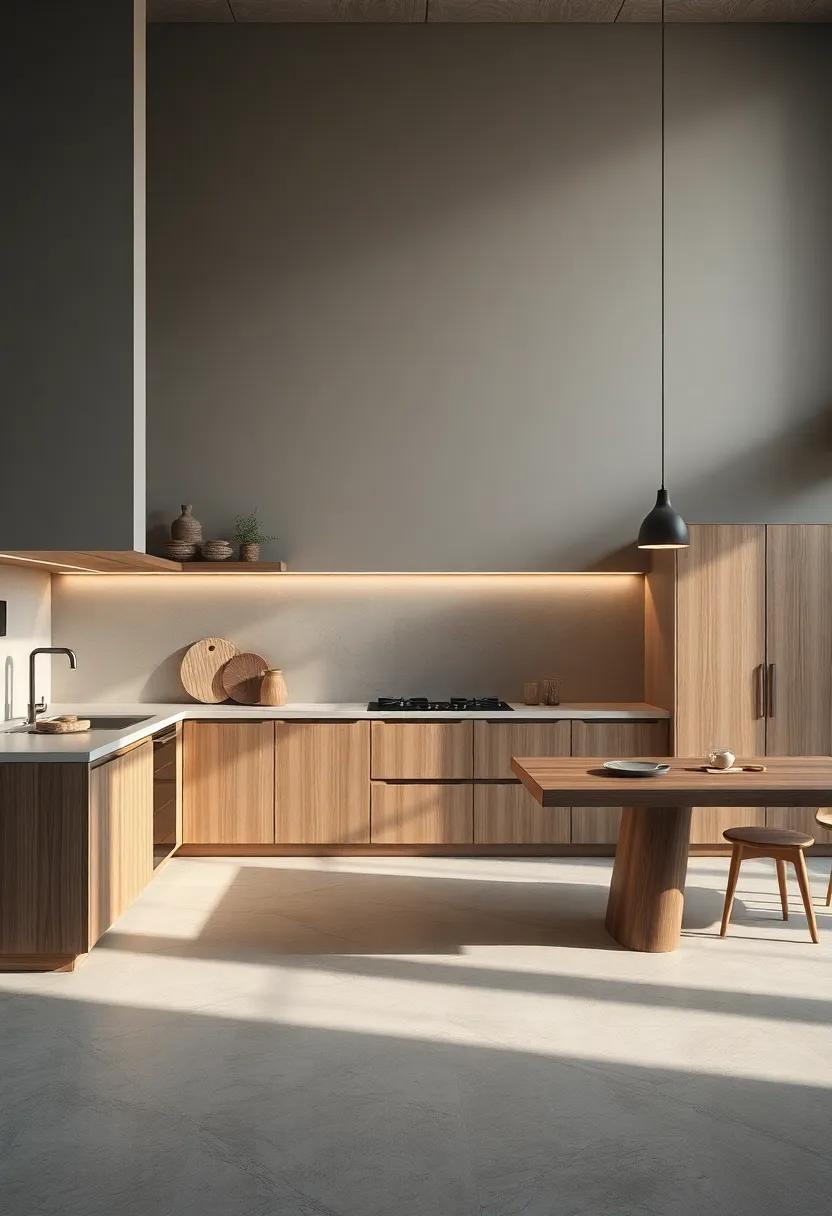
In the quest to create a moody kitchen aesthetic, the use of natural materials like wood and stone can authentically enhance the ambiance. These elements evoke a sense of warmth and comfort that balances the sometimes stark, modern finishes. Consider incorporating reclaimed wood beams for an inviting ceiling or a butcher block countertop that connects you to the earth.The deep grains and rich hues of wood provide a stunning contrast to sleek appliances and understated decor, effortlessly bridging the gap between contemporary and rustic styles.
Similarly, stone accents can forge an atmosphere steeped in tranquility and timelessness. From textured stone backsplashes to rugged sink installations,the choice of natural stone introduces a tactile element that can transform the overall feel of the space. Granite, slate, and marble each possess unique character and charm, making them suitable for various design aesthetics. Pair these materials with subdued color palettes and soft lighting to create a cozy ambiance, where every meal feels intimate and every gathering becomes a cherished memory.
Choosing the Right Textures: Soft Fabrics and Rustic Finishes in Kitchen Design
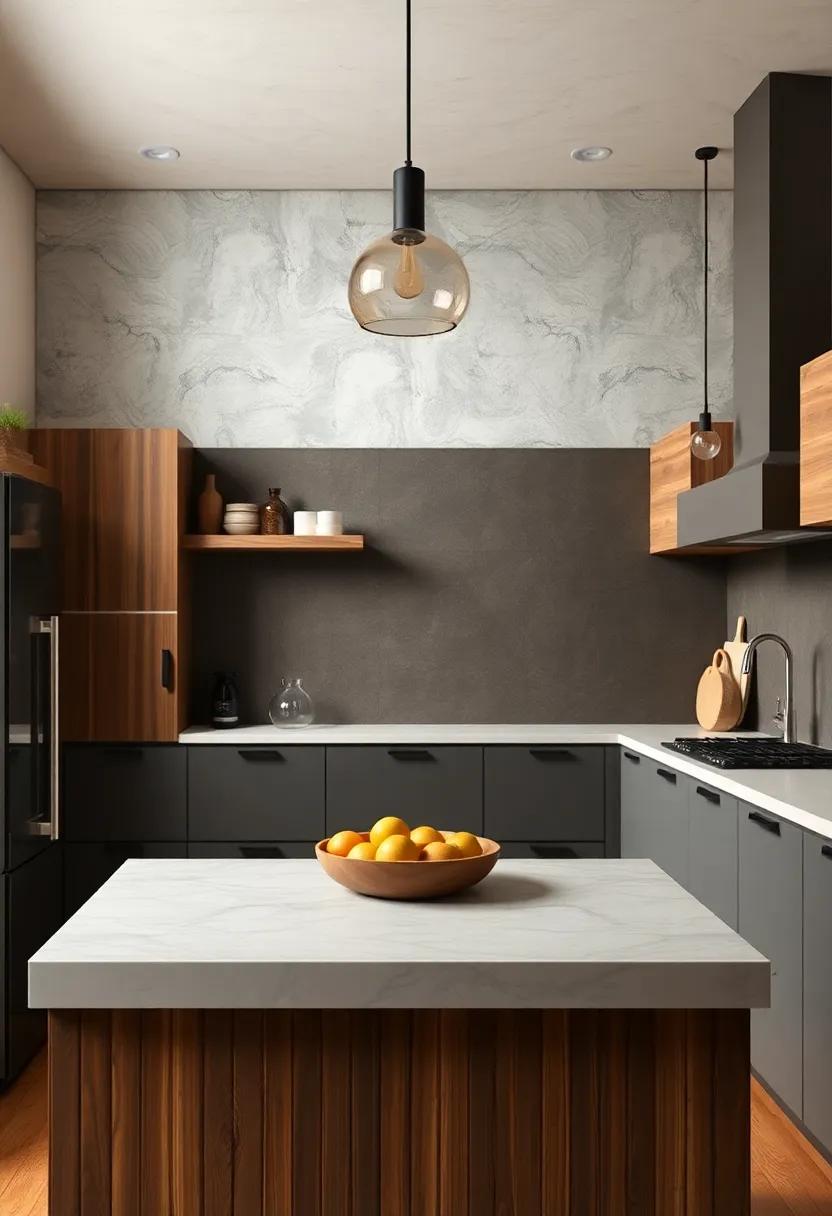
When curating a kitchen that exudes charm and comfort, the choice of textures plays a pivotal role in achieving a moody aesthetic. Soft fabrics, such as plush upholstered bar stools or cozy linens for window treatments, introduce an inviting touch that softens the starkness often associated with classic kitchen designs. Layering in these textiles not only adds depth but also creates a sensory experience that contrasts beautifully with harder surfaces. Consider incorporating elements like:
- Cotton or linen tablecloths for dining areas
- Textured cushions for seating
- Wool throws draped over benches
On the flip side, rustic finishes serve to ground the kitchen with an organic feel. Weathered woods, aged metal fixtures, and stone countertops evoke a sense of timelessness while accentuating the moody color palette. These elements can be harmonized to create a cohesive look by selecting materials that complement one another. A well-thought-out combination might include:
| Material | Suggested Color | Texture Characteristics |
|---|---|---|
| Reclaimed Wood | Deep Brown | Rough, Varied Grain |
| brushed Metal | Matte Black | Smooth, Industrial Feel |
| Natural stone | Slate Grey | Textured, Earthy Quality |
Artistry in Appliances: Stylish Kitchen Gadgets That Enhance Aesthetics
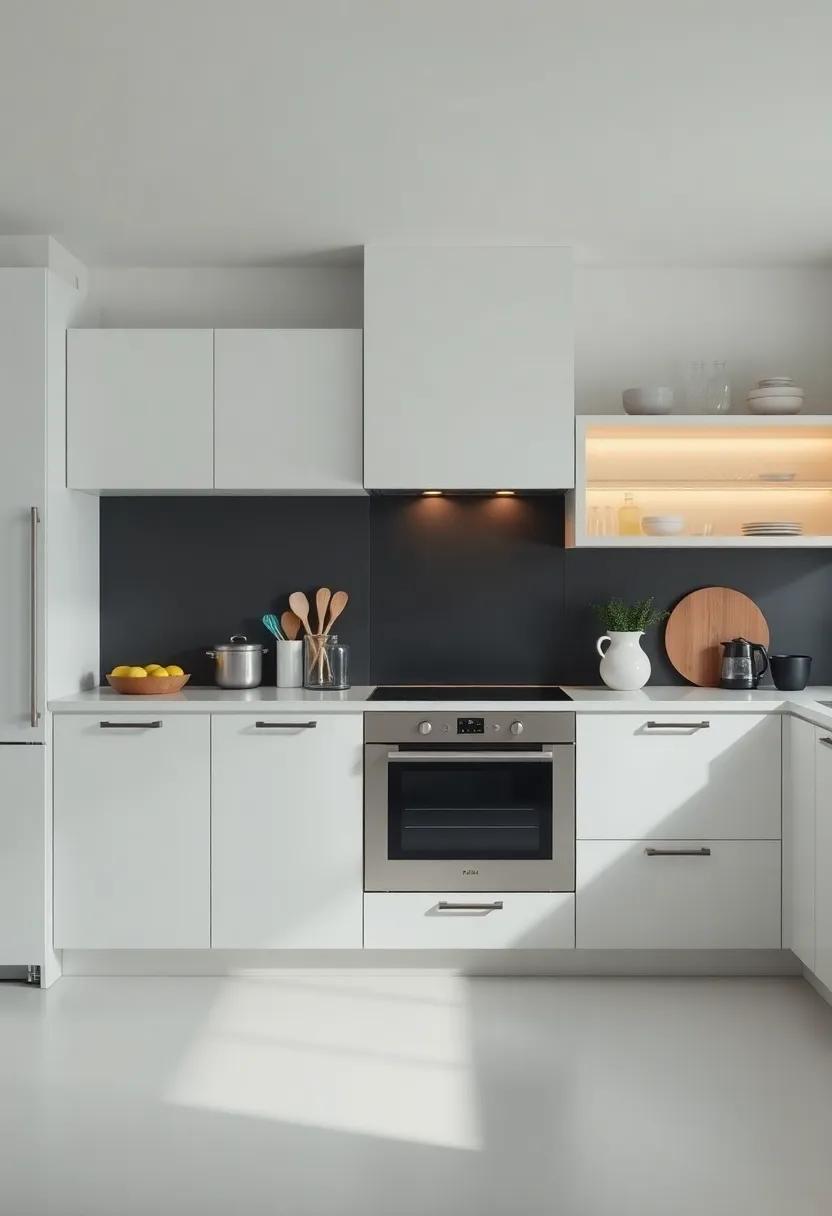
In a world where functionality meets beauty, kitchen gadgets are more than mere tools; they have become design statements. Consider a few standout appliances that not only serve practical purposes but also elevate the overall ambiance of your space:
- Retro-Inspired Toasters: Add a pop of vibrant color that resonates with nostalgia.
- Chic Espresso Machines: They bring cafe-quality brews right into your kitchen while being visually striking.
- designer Cookware: Crafted with elegance, these pieces are just as beautiful displayed as they are useful in preparation.
Moreover, the right color palette plays an essential role in creating a cohesive look. Embracing darker tones can impart depth, allowing metallic or glass appliances to shine even more.Here are a few color schemes that harmonize beautifully with stylish kitchen gadgets:
| Color Scheme | Effect |
|---|---|
| Charcoal & Copper | Warmth meets sophistication. |
| Midnight Blue & Silver | A touch of elegance with modern flair. |
| Forest Green & Gold | Nature-inspired, immersive atmosphere. |
embracing Vintage Finds: Unique Decor to Enhance a Moody Kitchen Vibe
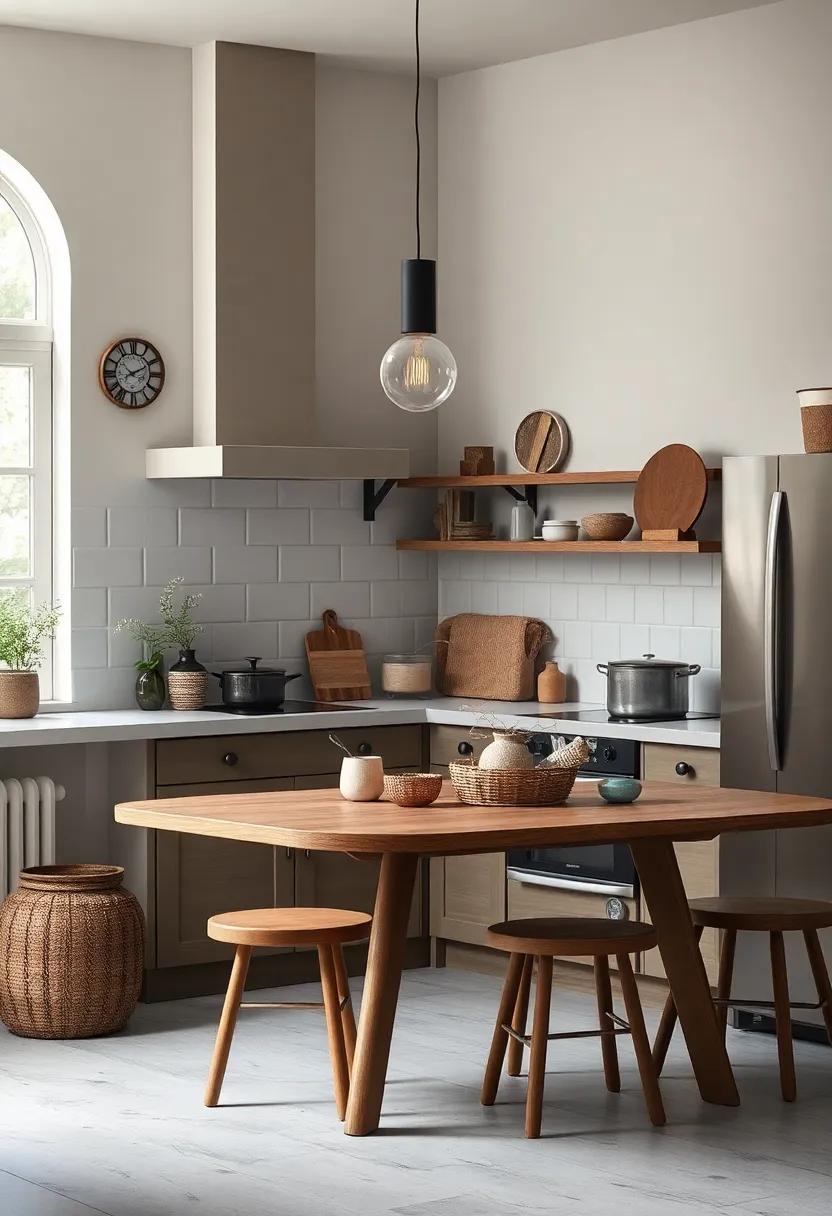
One of the most captivating aspects of a moody kitchen is the ability to mix vintage finds with modern elements, creating an ambiance that feels both welcoming and enigmatic. Start by exploring local thrift shops, flea markets, or online marketplaces for unique pieces that can accentuate the dark, rich color palette of your kitchen. Look for:
- Antique Cutlery: Silverware with intricate designs can add a touch of elegance.
- Vintage Glassware: Deep-hued goblets or amber bottles serve as stunning focal points.
- Old Cookbooks: Piled on shelves or displayed on countertops, they whisper of culinary adventures past.
Pair these vintage treasures with cozy textiles to bring warmth to the space. Think of layering rich fabrics such as velvet and linen in curtains, table runners, or cushions.Incorporate items like:
| Textile Type | Color Idea |
|---|---|
| Tablecloth | Deep Forest Green |
| Cushions | Plum or Burgundy |
| Kitchen Towels | Charcoal Gray |
These choices not only enhance the overall moody aesthetic but also provide a tactile contrast to harder surfaces, allowing for a space that feels alive and rich in character.
Customizing Cabinetry: Timeless Designs That Reflect Personal Style
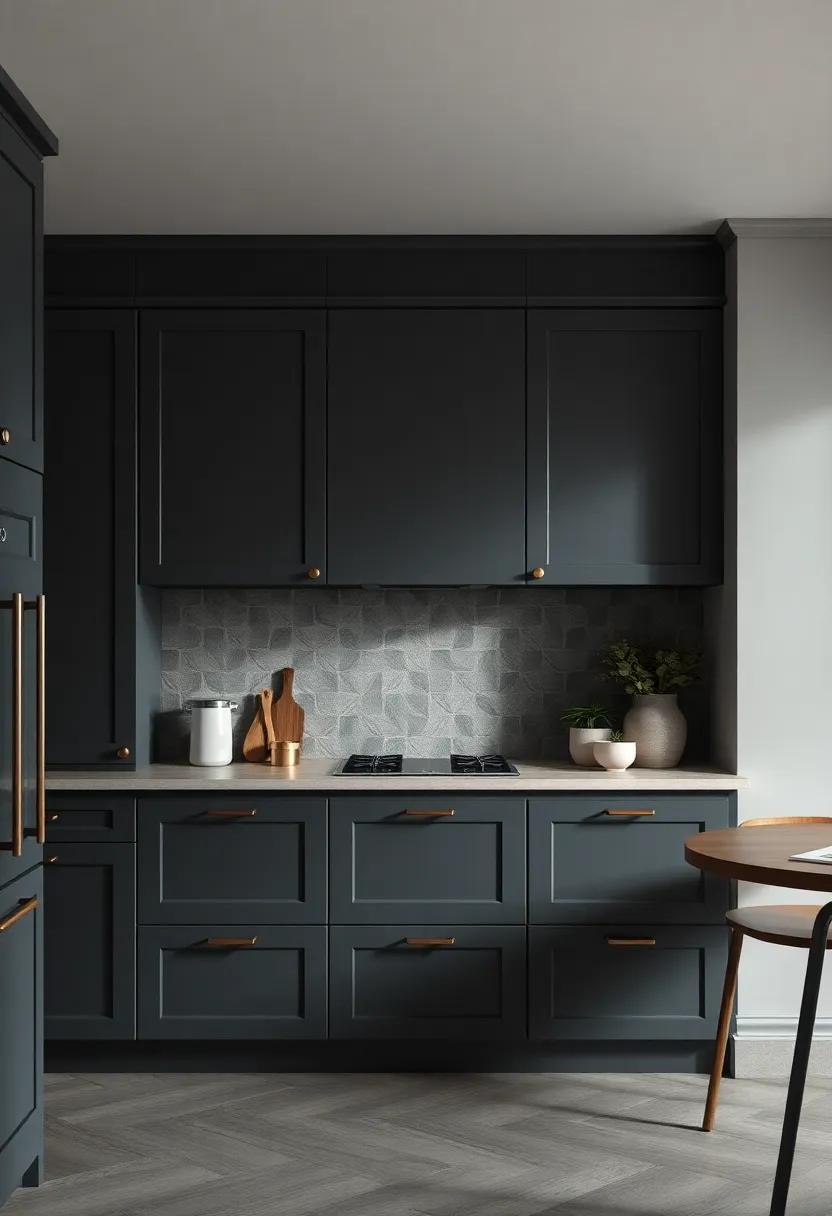
When it comes to creating a kitchen that feels personal and inviting, the nuances of cabinetry play a pivotal role. Opting for custom designs that intertwine both functionality and aesthetic appeal can elevate your space. Consider incorporating elements like:
- Unique finishes: Matte black, deep navy, or rich mahogany can invoke a sense of depth.
- Intricate molding: Crown and base moldings can lend a sophisticated touch.
- Glass doors: Showcasing curated collections fosters an inviting ambiance.
In addition to these elements, personalizing your cabinetry extends to the hardware selection. Choose knobs and pulls that resonate with your style, whether they are sleek and modern or ornate and vintage. A well-thought-out combination of materials can also add layers of interest; think of mixing wood with metal or introducing unexpected textures. Moreover, the practical aspect of storage solutions should not be overlooked. Customized interior dividers and pull-out shelves optimize space while keeping everything within easy reach.
Layering with accessories: The Role of Curated Decor in Creating Ambiance
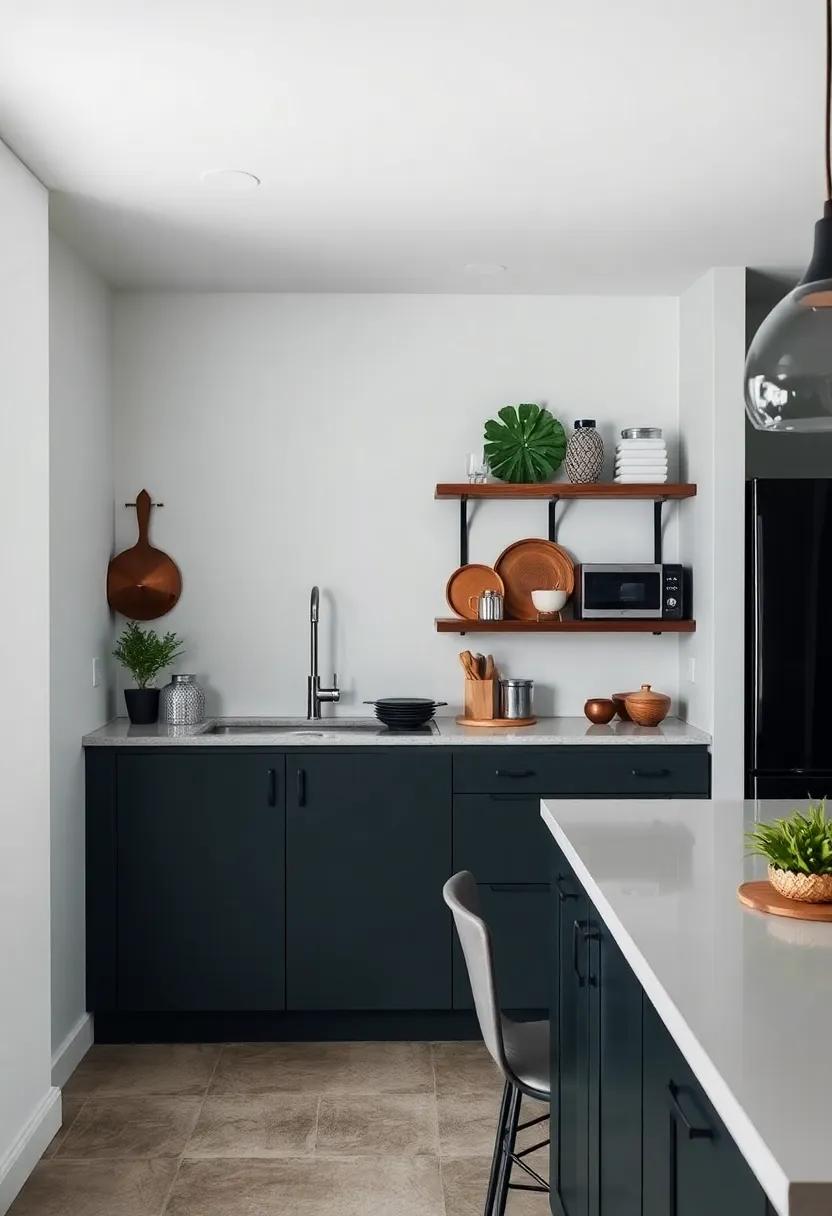
In the realm of designing a moody kitchen, accessories play a pivotal role in transforming stark spaces into inviting retreats. Curated decor brings character, layering depth and warmth in an otherwise muted backdrop. Thoughtfully selected items, such as vintage kitchenware, handcrafted utensils, and eclectic art pieces, can foster a sense of history and personality. Consider incorporating:
- Textured textiles like plush dish towels or richly colored table runners
- Unique lighting such as pendant lights or soft-glow candles to create an intimate atmosphere
- Statement plants that not only purify the air but also add a vibrant pop against dark cabinetry
Layering these accessories allows for maximum impact,crafting a cohesive look that feels both lived-in and stylish. Each element should harmonize with the overall color palette, be it deep greens, matte blacks, or muted earth tones. To illustrate this concept, here’s a simple breakdown of accessory types and thier potential impacts:
| Accessory Type | Impact on Ambiance |
|---|---|
| Textiles | Softens hard surfaces and adds warmth |
| Lighting | Sets the mood and enhances color contrasts |
| Plants | Adds life and breaks monotony |
The power of Open Shelving: Displaying Your Kitchen’s Soulful Essentials
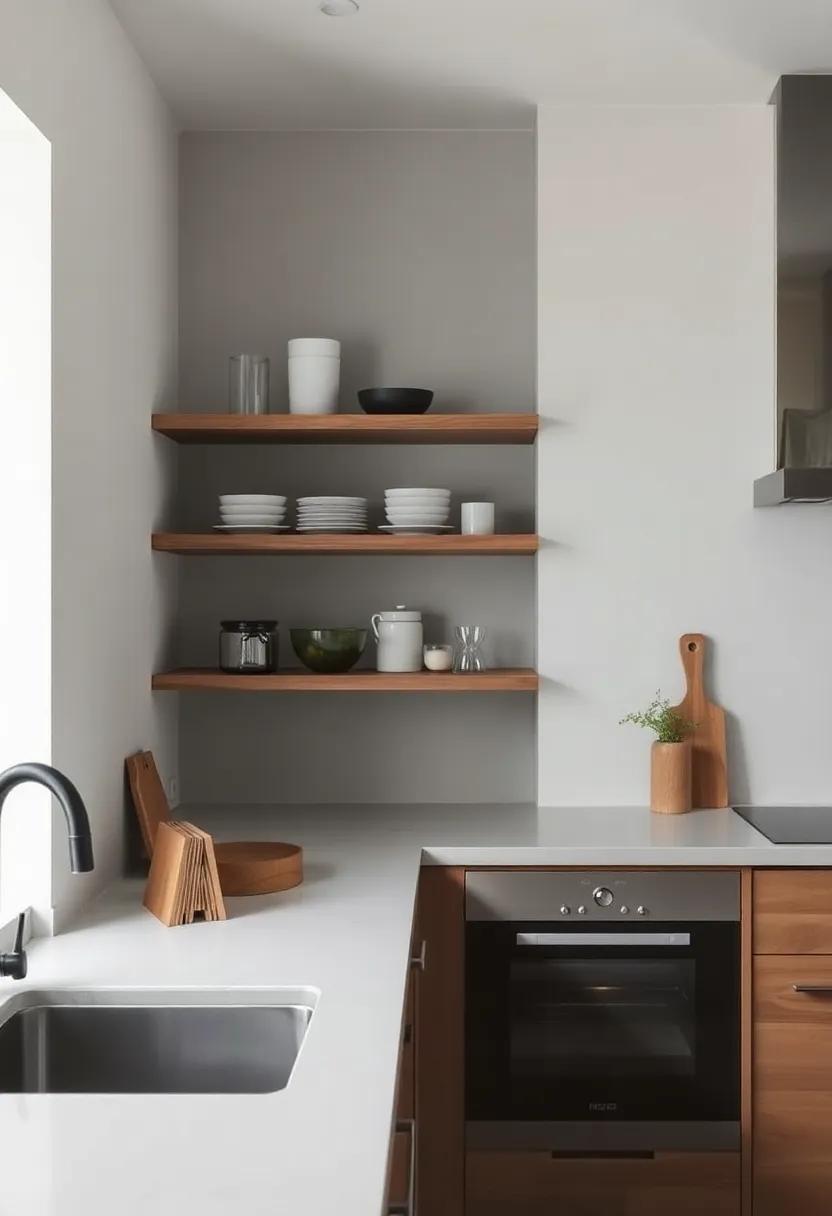
Open shelving is not merely a storage solution; it’s a curated display of your kitchen’s personality. By eliminating the barriers created by customary cabinetry, your essentials become prominent features that can be harmoniously arranged to reflect your style.Dishes, glassware, and cookbooks come together to form a visual story, showcasing not just functionality, but also the artistry behind each piece. When styled with intention,every shelf can reflect chapters of your culinary journey,inviting warmth and a sense of welcome into the heart of your home.
To create a truly captivating open shelving arrangement, consider incorporating elements that evoke both character and coziness. A mix of materials can add depth: rustic wooden boards, elegant ceramic plates, and vintage glass jars can form a tactile landscape that draws the eye. For an added touch, use varying heights in your display to keep things fascinating; think about utilizing stacked books, candle holders, and hanging herbs. Each shelf can become a vignette that reflects your passion for cooking and entertains the eye, transforming the mundane into an artful expression.
Inclusive and Functional Layouts: Designing a Space for Culinary Creativity
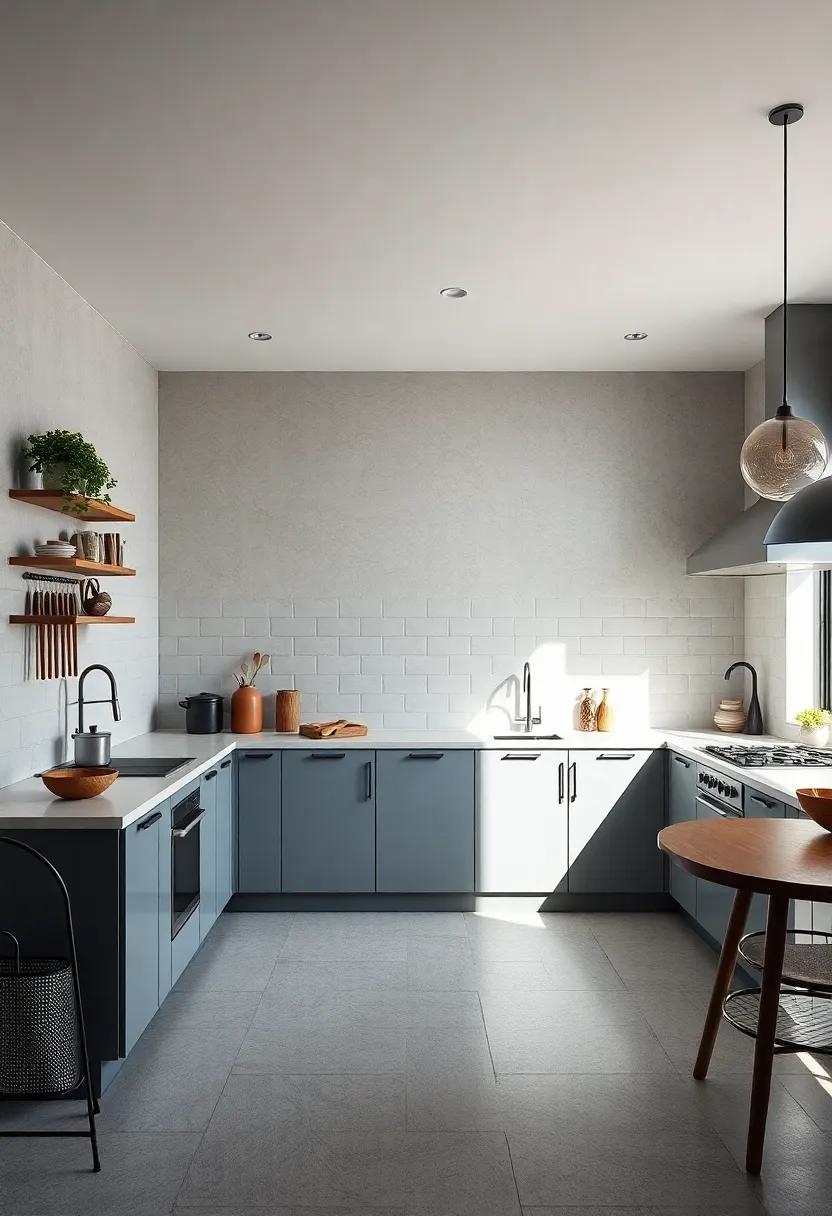
Creating an inviting kitchen environment that balances aesthetics with functionality is key to fostering culinary exploration.Embracing bold textures,unexpected color schemes,and layered lighting can enhance the overall mood,inviting creativity while still aiming for practicality. Consider incorporating the following elements into your kitchen design:
- Flexible Work Zones: Designate areas for prep, cooking, and clean-up that flow seamlessly into one another.
- Multi-Functional Furniture: Opt for islands that double as dining spaces or storage units to increase your usable area.
- Accessible Storage: Use open shelving and drawers that are easily reachable, ensuring that your favorite tools and ingredients are always at hand.
To further enhance the functional layout of a moody kitchen, consider a palette that promotes a sense of calm yet encourages inspiration. Rich tones mixed with natural materials can create an intimate atmosphere while beautifully showcasing the art of cooking. Here’s a simple guide to color pairing for a harmonious aesthetic:
| Primary Color | Accent Color | Texture |
|---|---|---|
| Charcoal Gray | Burnt Orange | Matte Finish |
| Forest Green | Muted Gold | Wood Grain |
| navy Blue | Rust Red | Glossy Ceramic |
Color Psychology: How different Shades Influence Mood in Your Kitchen
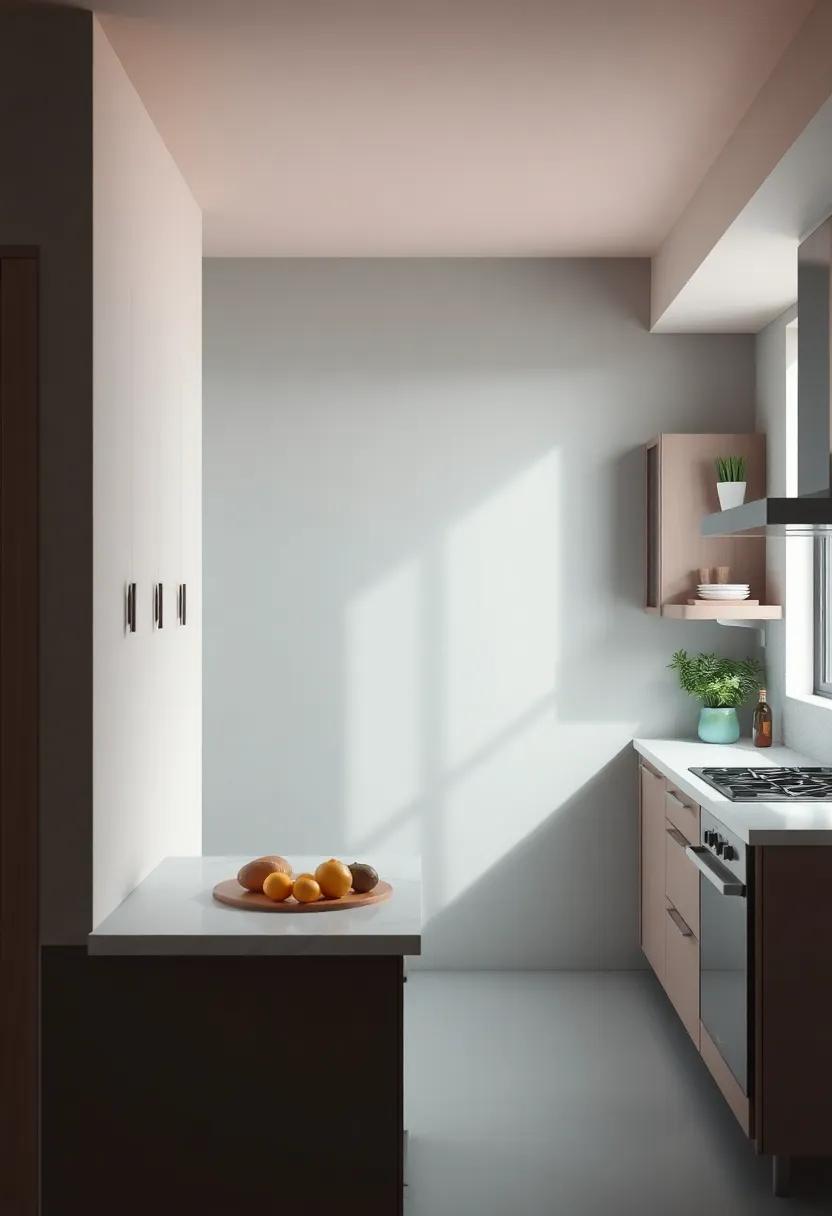
Colors play a vital role in shaping the atmosphere of a space, and your kitchen is no exception. When selecting shades for this pivotal area, consider how hues can evoke different emotions. For example, warm colors like reds and oranges can stimulate appetite and conversation, making them ideal for a vibrant kitchen setting. On the other hand, cool colors such as blues and greens promote calm and tranquility, perfect for creating a serene cooking and dining experience. Embracing deeper shades, like rich burgundy or navy, can enhance the cozy and moody aesthetic that many are drawn to, setting a stage for intimate gatherings and culinary creativity.
Interestingly, the psychology of color extends beyond mere aesthetics, influencing daily living and interactions. As a notable example, a yellow backsplash can spark positivity and cheer, energizing morning routines, while a touch of deep gray can instill a level of sophistication, fostering an environment of focused activity. Incorporating earthy tones like terracotta or olive green can ground the space, encouraging a connection with nature. When designing your moody kitchen, consider layering colors for depth and balance, such as combining dark cabinets with lighter countertops to create visual intrigue. The right color palette can transform your kitchen from just a cooking space into a vibrant haven of joy and experiences.
Mood Boards as Inspiration: Crafting Visions for your Kitchen Transformation
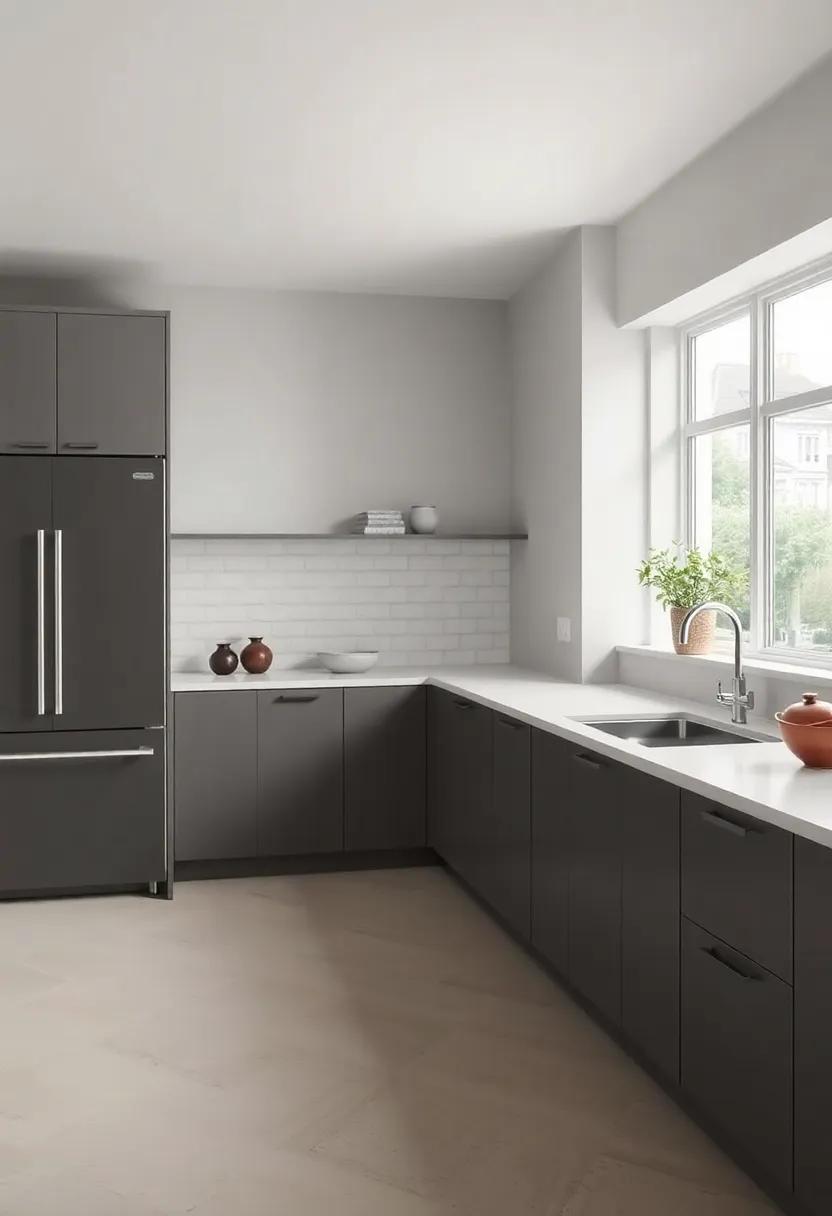
Creating a mood board allows you to visualize the atmosphere and vibe you want to infuse into your kitchen transformation. By gathering color swatches, textures, and inspirational images, you can begin to see how different elements harmonize to form a cohesive design. Consider including:
- Color Palettes: Dark hues set against softer tones can create a captivating contrast.
- Material Samples: Incorporate wood, metal, and stone to highlight the moody aesthetic.
- Lighting Ideas: Explore various light fixtures that provide both functionality and ambiance.
Once you have assembled your collection, use it as a roadmap for the transformation process.A well-curated mood board can clarify your vision,making it easier to decide on the kitchen layout,cabinetry,and accents. Incorporating pieces like:
| Element | Example |
|---|---|
| Counters | Dark granite or butcher block |
| Backsplash | Matte black tiles or aged brass finishes |
| Cabinets | Deep navy or charcoal shades |
can help bring your vision to life, ultimately resulting in a kitchen that feels both inviting and thoughtfully designed, where every detail contributes to the overall mood you wish to create.
The Importance of Flow: Ensuring Your Kitchen Is Intuitive and Inviting
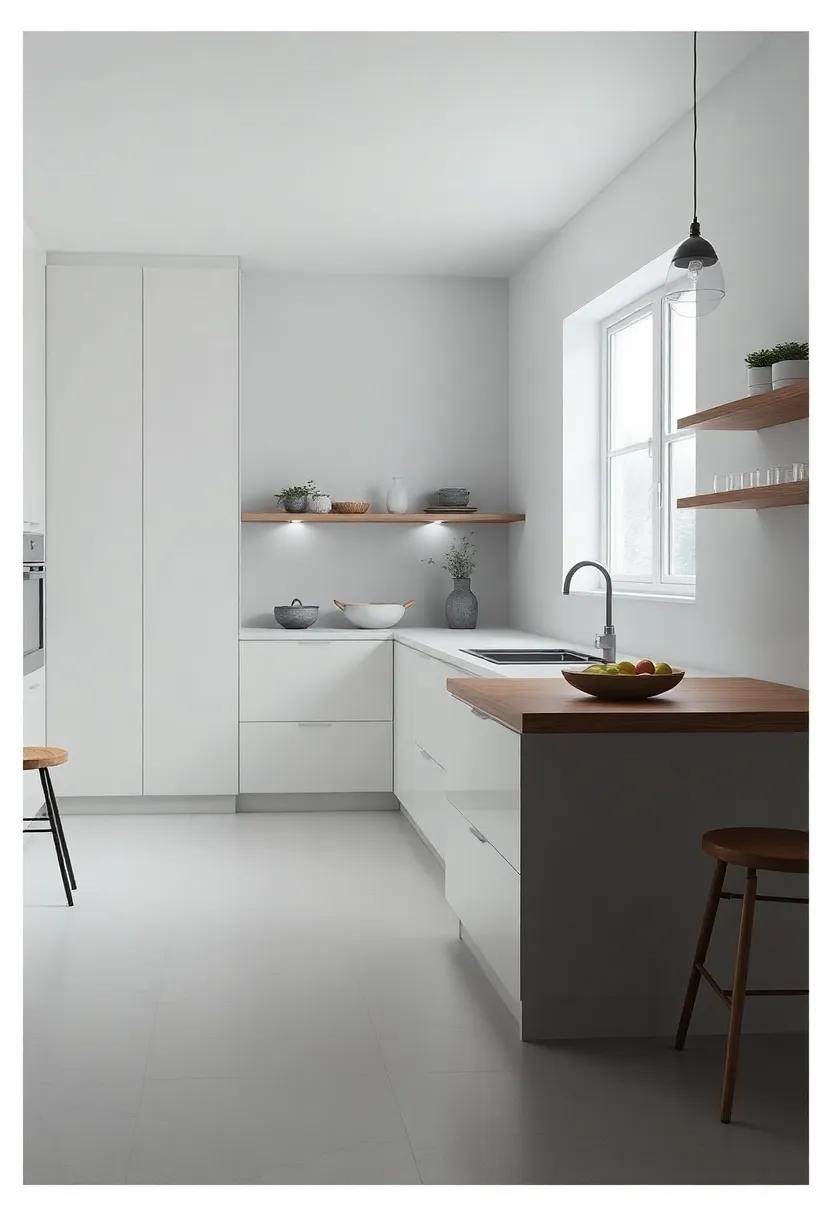
Creating a kitchen that flows seamlessly is essential for maintaining an organic rhythm in your cooking and entertaining routines. To foster this intuitive design, consider the key elements that govern movement and usability within the space. An effective kitchen layout prioritizes accessibility and ease of use, allowing for a natural progression from food preparation to cooking, serving, and cleanup. This can be achieved by strategically placing frequently used items within arm’s reach, ensuring that everything has its rightful place. The layout could also include elements that encourage social interaction, such as an open floor plan or a central island that invites guests to gather around.
Embracing the moody aesthetic can enhance this functional flow by incorporating materials and colors that evoke warmth and comfort. The kitchen should be a sanctuary — think muted tones, rich textures, and ambient lighting that set a welcoming tone. To further emphasize this inviting atmosphere, consider these elements:
- Natural Lighting: Use large windows for ample daylight.
- Textured Surfaces: Incorporate wood or stone finishes to add depth.
- Layered Lighting: Mix task, ambient, and accent lighting for versatility.
To visualize the perfect blend of function and aesthetic, consider the following table that outlines vital design priorities:
| Design Element | purpose | Aesthetic Influence |
|---|---|---|
| Open Shelving | Encourages accessibility | Showcases decor and organized utensils |
| Dark cabinetry | Creates a moody backdrop | Enhances contrast with light countertops |
| Rustic Accents | Adds character | Softens the sleekness of modern appliances |
Integrating Artistic Elements: Showcasing Statements of Design in Your Kitchen
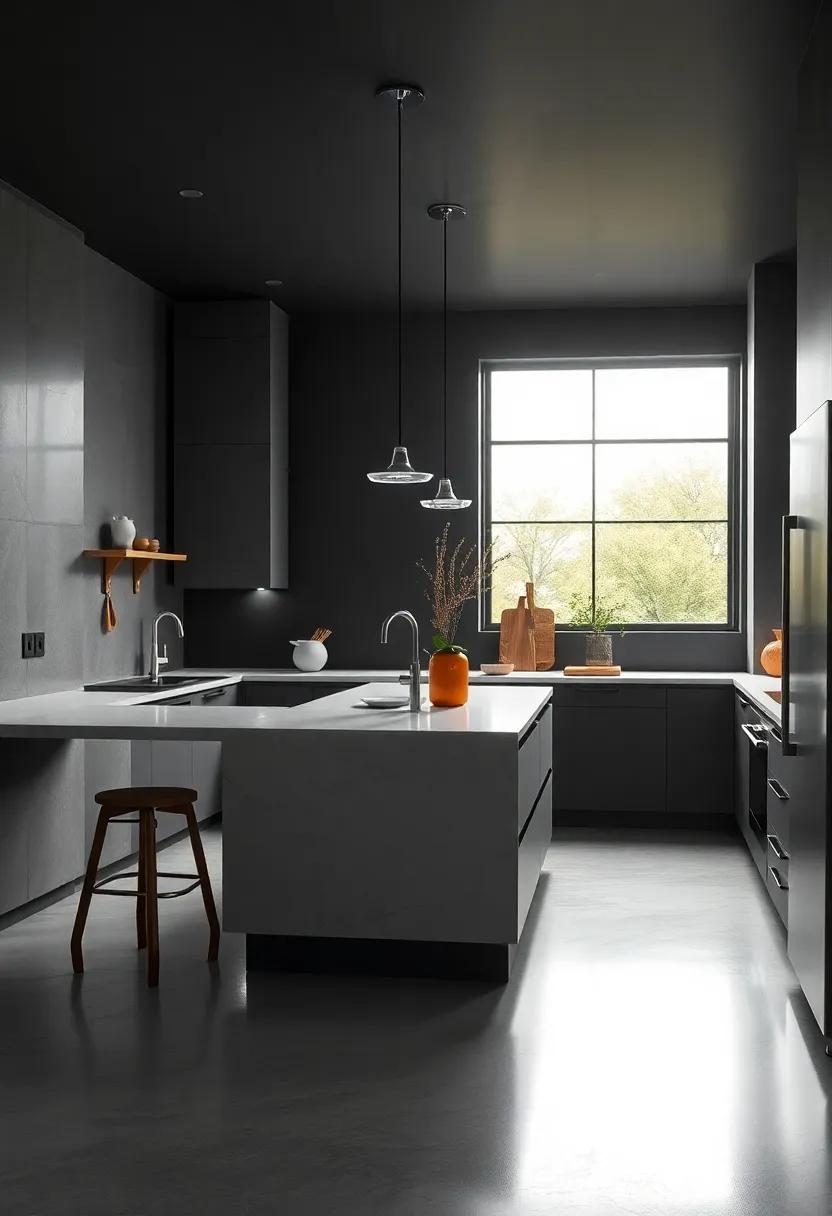
Incorporating artistic elements into your kitchen design can transform this essential space into a personal gallery, where culinary creativity flourishes amid visual splendor. Consider integrating textured materials such as reclaimed wood, matte metals, or artisan ceramics to evoke a sense of warmth and depth. Highlight your design statements by introducing bold color palettes or unexpected patterns. Artful touches like an oversized abstract painting or a carefully curated collection of artisanal dishware can serve as focal points,drawing the eye while amplifying the moody aesthetic you seek.
To seamlessly merge functionality with artistry, opt for custom cabinetry that boasts unique designs, or install open shelving to showcase beautiful kitchenware. Consider these ideas for creative accents:
- Statement Lighting: Pendant lights with sculptural designs can enhance the atmosphere.
- Decorative Backsplashes: Use bold tiles or hand-painted murals to add character.
- Curated Accessories: Display vintage cookbooks or handmade pottery to enrich the visual narrative.
| Artistic Element | Impact |
|---|---|
| Textured Materials | Add depth and richness. |
| Bold Colors | Create visual interest. |
| Unique Lighting | Set mood and ambiance. |
The Allure of Minimalism: Striking the Right Balance in a Moody Kitchen
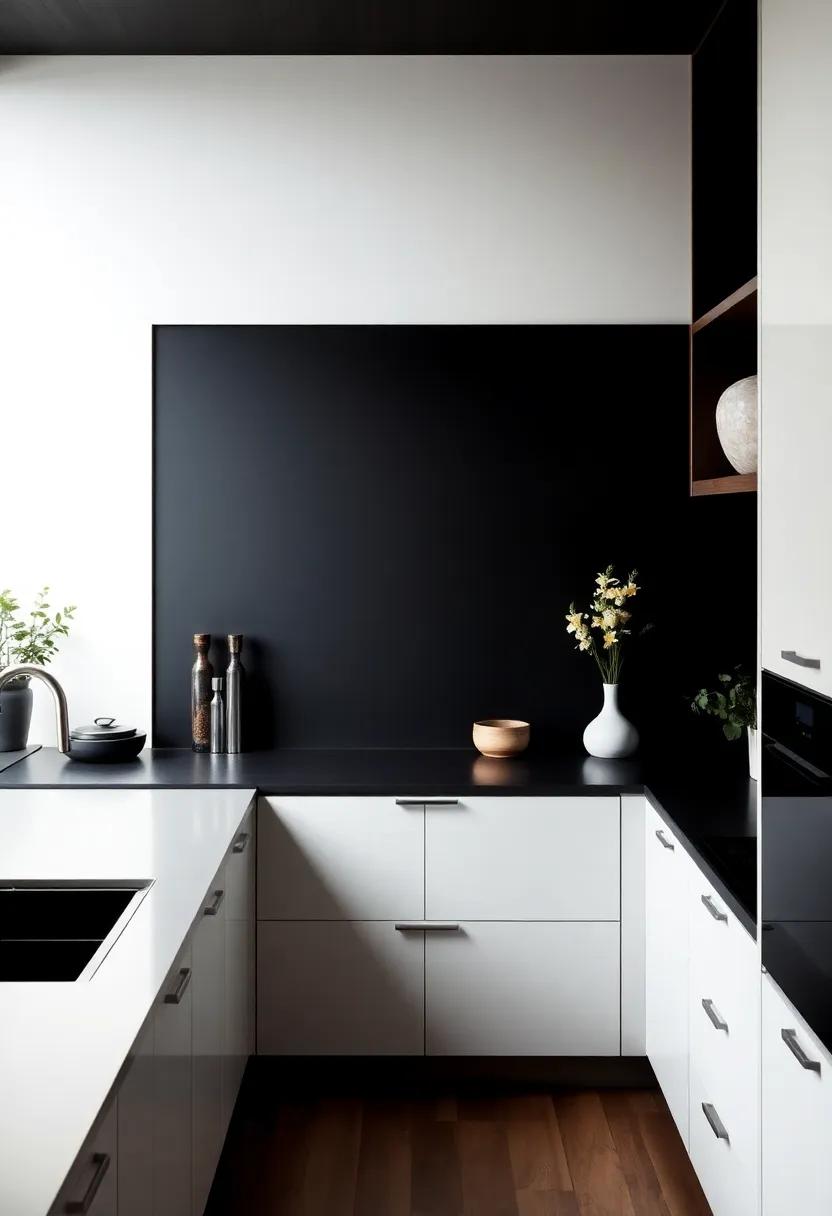
The moody kitchen aesthetic thrives on a paradox: the concept of minimalism fused with deep,rich colors evokes a sense of sophistication without sacrificing warmth. Achieving this balance requires a careful selection of elements that offer both functionality and a nod to artistry. Dark cabinetry, subtle lighting, and textured surfaces can create a strikingly modern backdrop while ensuring the space feels inviting. by favoring a restrained palette, you can highlight the beauty of essential kitchen tools and décor, which can be elevated into visual statements. In this way, less truly becomes more, allowing the kitchen to breathe and remain contemporary while nurturing a cozy atmosphere.
When embarking on the journey to a moody kitchen, consider the following essential components to achieve the desired allure:
- Color Palette: Deep greens, navy blues, and charcoal greys are stunning complements to stark white or warm wood accents.
- Materials: Pair polished metals with matte finishes for a tactile experience that invites touch and admiration.
- Lighting: Incorporate warm, low lighting with statement fixtures that can double as art pieces, enhancing the mood.
Strategically selected furniture can play a vital role in this design ethos. A well-crafted table or sleek stools can serve both as functional items and aesthetic focal points. below is a brief overview of furniture options that can accentuate the moody effect:
| Furniture Type | Material | Color Options |
|---|---|---|
| Dining Table | Wood | Dark Oak, Walnut |
| Bar Stools | Metal | Black, Antique Brass |
| Counters | Granite | Charcoal, Emerald |
Balancing Modern and Rustic: Harmonizing Diverse styles in Your Cooking space
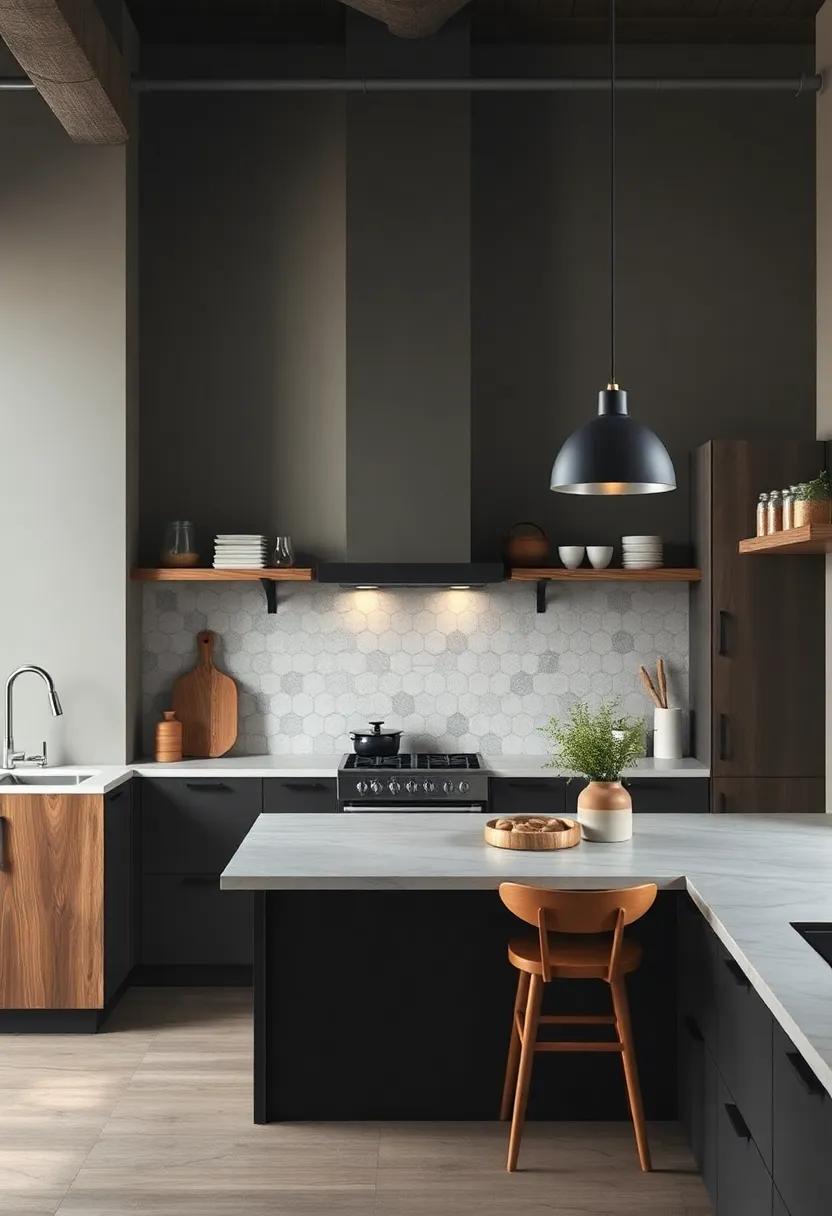
Creating a cooking space that bridges the gap between modern sophistication and rustic charm requires thoughtful design choices that reflect both aesthetics. Consider incorporating natural materials such as reclaimed wood or stone countertops alongside sleek, contemporary appliances. This juxtaposition creates a dynamic visual experience that feels both welcoming and cutting-edge. A well-placed barn door or vintage light fixture can add warmth and history, turning a sterile kitchen into a cozy haven while maintaining the shiny appeal of the latest kitchen technology.
To further enhance the balance between these two styles, employ a cohesive color palette that ties everything together. Deep, moody hues such as forest green, charcoal, or navy can serve as the perfect backdrop for polished metal fixtures or ceramic dishware. Thoughtfully arranged accessories such as herb planters, culinary displays, or handcrafted decor items can provide character without overwhelming the space. Use these elements to create a harmonious flow that invites both lively gatherings and intimate culinary moments.
Daring Combinations: Exploring Dark and Light Elements in Kitchen Design
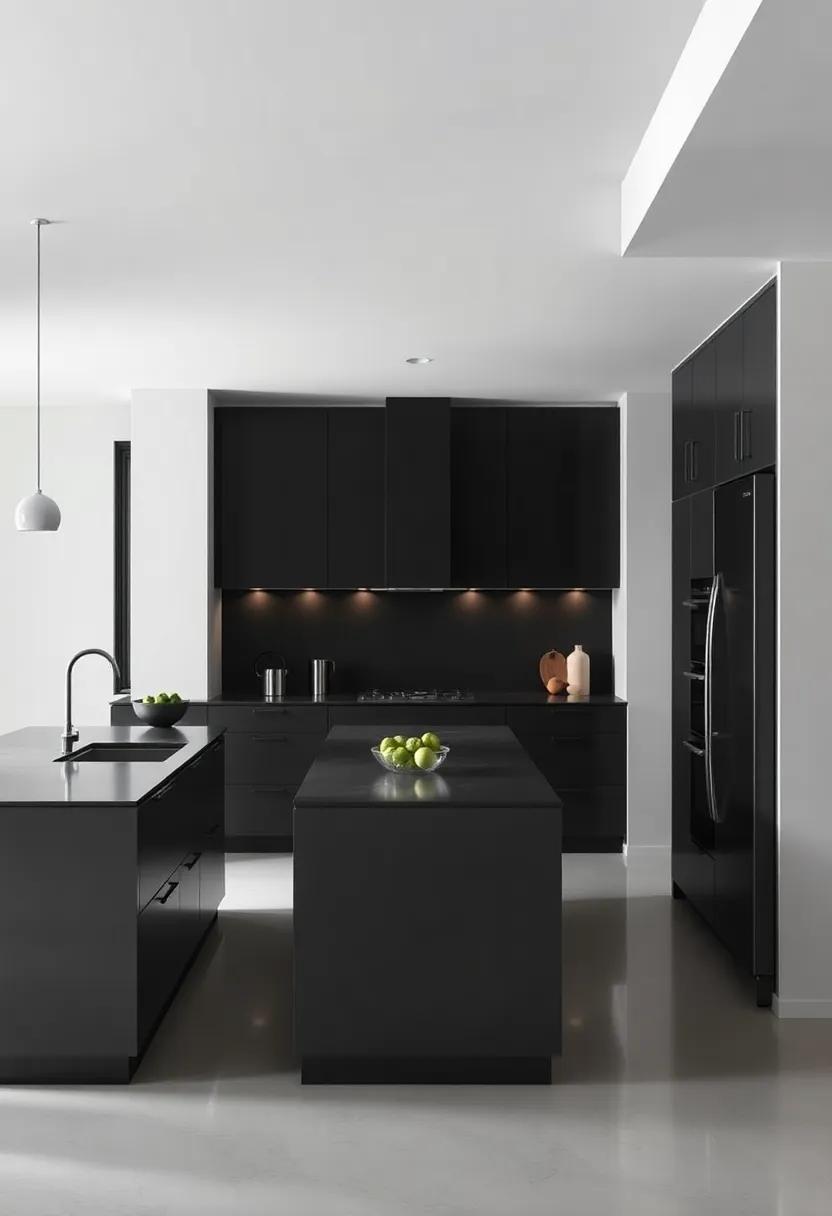
The exploration of dark and light elements in kitchen design creates a compelling narrative that elevates your culinary space. Imagine deep navy cabinetry juxtaposed with crisp white countertops, a combination that instills sophistication while maintaining a bright atmosphere. The contrast not only draws the eye but also fosters a dynamic energy, transforming the kitchen from a mere cooking area into an engaging space for both culinary creation and social gatherings.Additionally, integrating natural materials such as wood accents or stone backsplashes can soften the darkness, providing warmth and balance that enhances the overall aesthetic.
Another brilliant strategy is to play with lighting. Consider incorporating pendant lights with a matte black finish over a light marble island; the fusion creates a focal point that’s both striking and harmonious. Use a mix of textures to harmonize these shades—smooth finishes against rough materials can evoke rich contrasts while ensuring the design feels cohesive. Embrace the drama of the moody aesthetic through thoughtful placement of accessories and fixtures, allowing for a sleek interplay of elements that celebrates uniqueness while remaining functionally grounded.
The Importance of Personal Touches: Infusing Family Heritage into Your kitchen
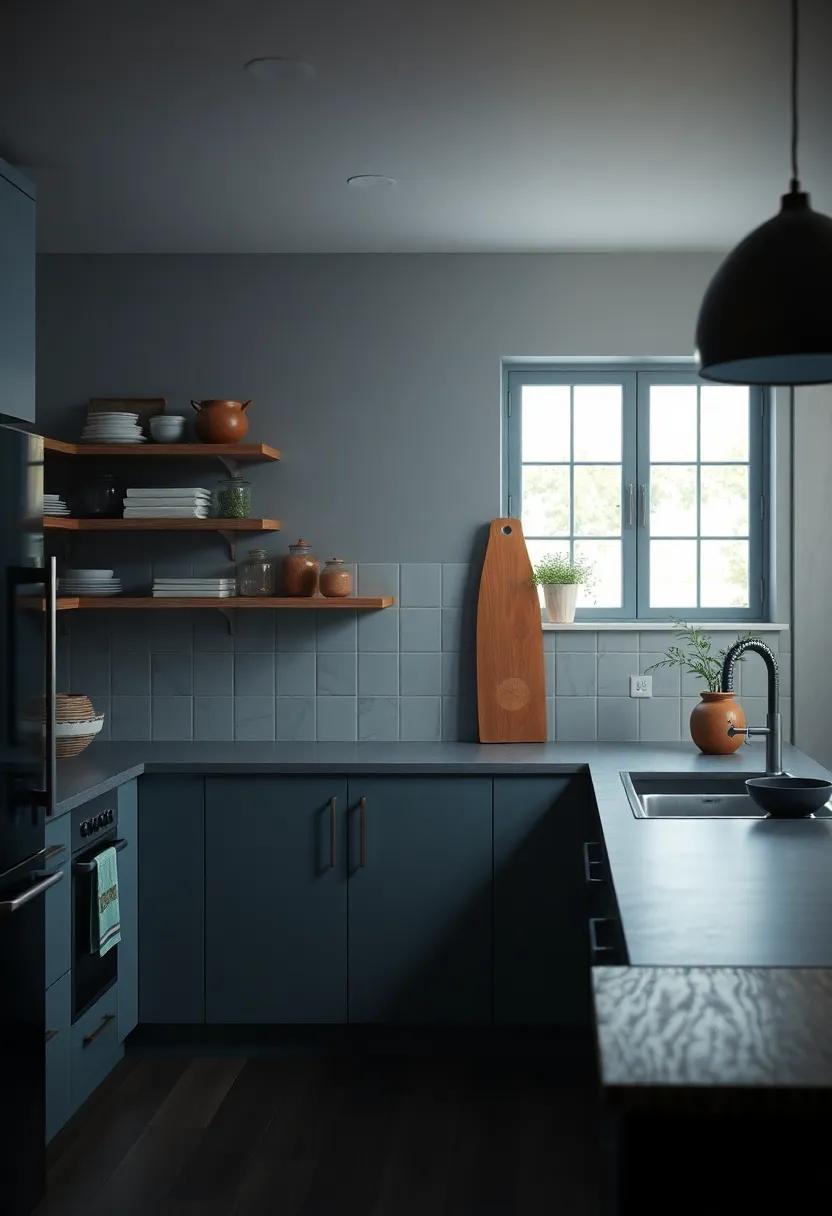
Bringing family heritage into your kitchen transforms it from a mere cooking space to a treasure trove of memories and stories. By incorporating personal touches, you create an environment that not only reflects your style but also honors your roots. Consider adding heirloom kitchenware or traditional family recipes displayed artistically. Items such as your grandmother’s favorite mixing bowl or a vintage cookbook can serve as conversation starters and evoke feelings of nostalgia. It’s these simple additions that weave a narrative through your kitchen, making it feel welcoming and intimate.
to further emphasize this unique aesthetic, think about using colors, textures, and styles that resonate with your family’s history. You might choose to paint cabinets in rich, earthy tones reminiscent of your homeland’s landscapes or incorporate fabric patterns that echo those found in family heirlooms. Create a striking focal point by gallery-walling cherished family photos in stylish frames or even crafting a DIY spice rack that showcases cherished recipes. Each element reinforces the personal connection to your culinary space. Consider the following elements:
| Element | Purpose |
|---|---|
| Heirloom Kitchenware | Adds character and nostalgia |
| Family Recipe Display | Pays homage to tradition |
| color Palette | Evokes emotional ties |
| Gallery Wall | Creates a personal narrative |
| DIY Crafts | Showcases creativity and heritage |
Mood-Enhancing Scents: The Role of Aromatherapy in Kitchen Spaces
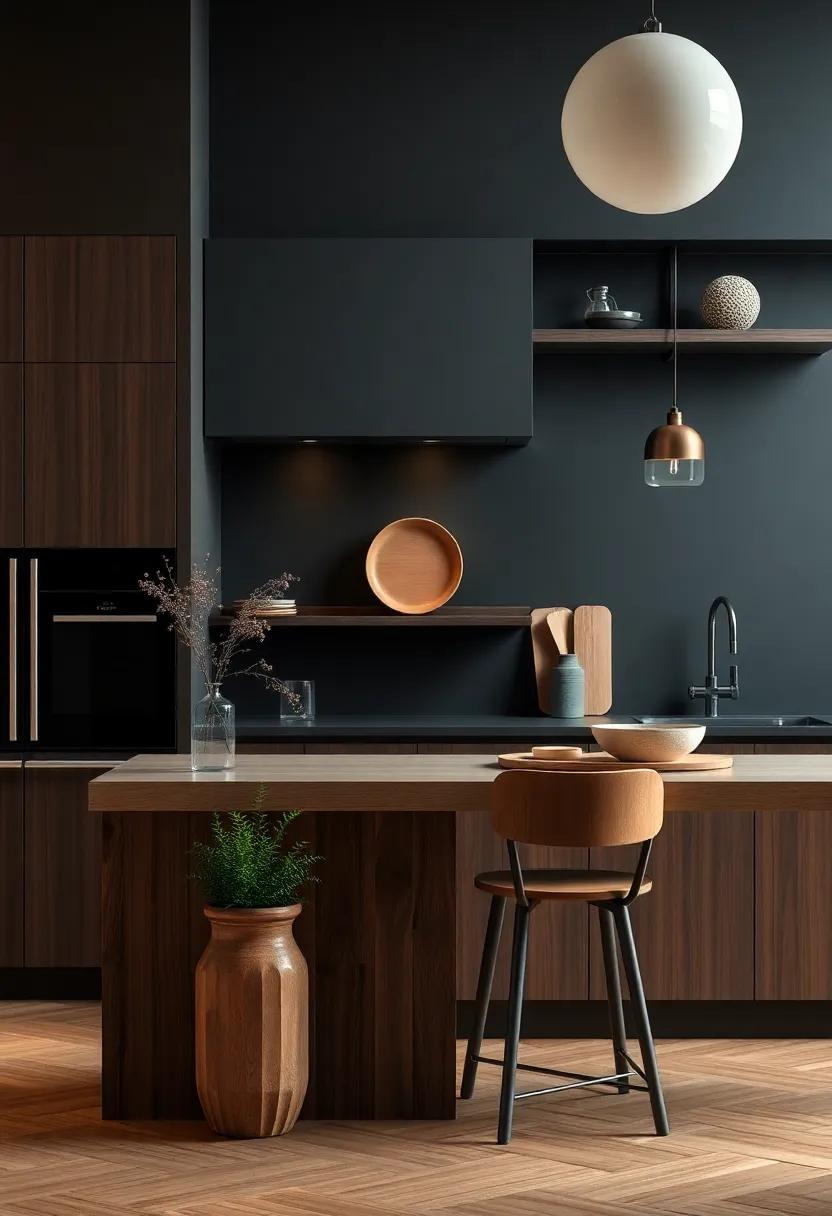
In the kitchen, where culinary magic unfolds, the ambiance can elevate the experience of cooking and sharing meals. By incorporating mood-enhancing scents through aromatherapy, we can create a welcoming atmosphere that resonates with warmth and creativity. Scents like cinnamon,vanilla,and rosemary not only tantalize our taste buds but also stimulate the mind,making the kitchen a sanctuary for culinary exploration. Consider using essential oil diffusers or simmer pots filled with water, herbs, and spices to envelop your space in comforting aromas that evoke feelings of nostalgia and joy.
The choice of fragrance can significantly impact mood and behavior, transforming the kitchen into a hub of positivity and inspiration. Embrace the unique characteristics of different scents to tailor your kitchen environment:
- Fresh citrus—invigorating and uplifting, perfect for early morning meals.
- Earthy sandalwood—grounding and calming, ideal for evening gatherings.
- Herbal basil—stimulating creativity,great for experimenting with new recipes.
To effectively combine these elements,you can explore options in a simple table:
| Essential Oil | Effect | Usage |
|---|---|---|
| Citrus | Invigorating | Desserts and morning broths |
| Sandalwood | Grounding | Evening meals and relaxation |
| Basil | Creative | Cooking experiments |
Textures That Speak: Using Tactile Materials to Enrich the Kitchen Experience
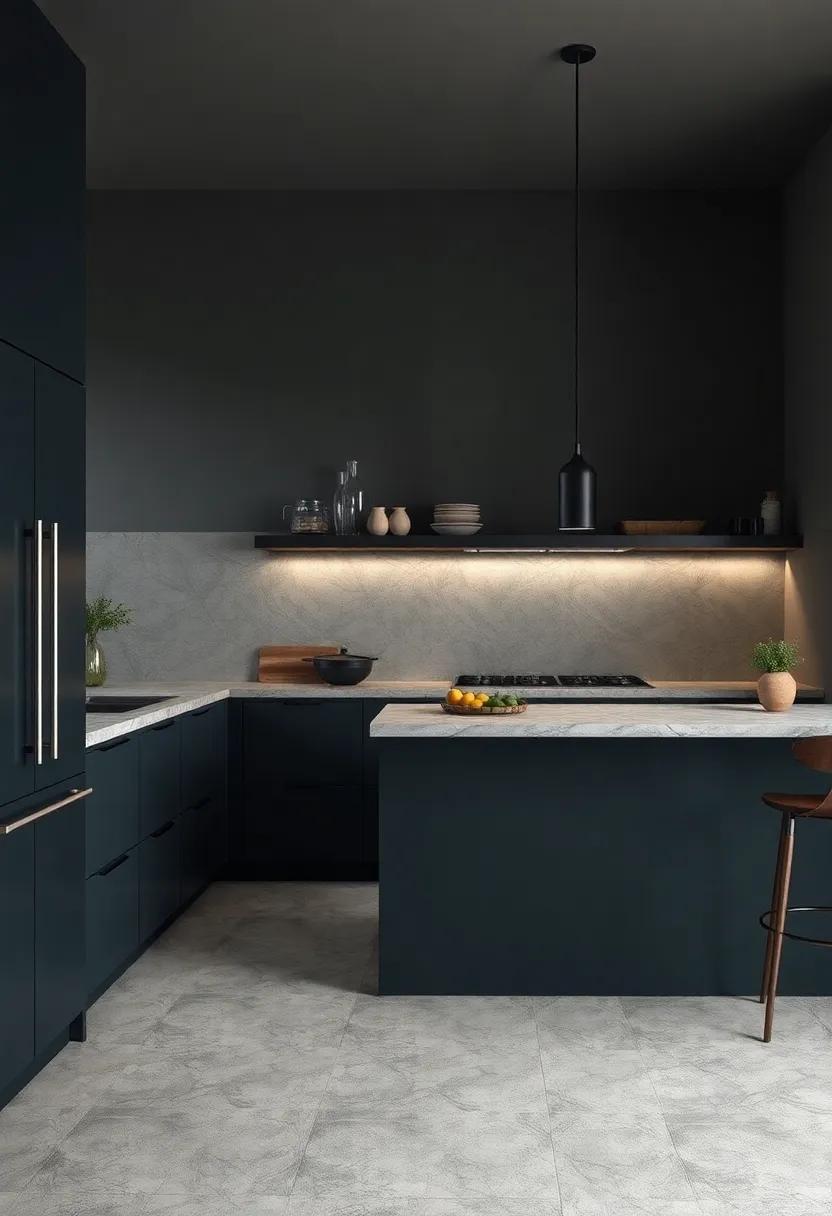
Engaging with your kitchen through tactile materials can transform the space into a sensory haven. The interplay of different textures not only elevates the aesthetic but also enhances the functional experience. Consider the following materials that can be seamlessly integrated:
- Rough-hewn wood: Use reclaimed wooden countertops or open shelving to introduce organic warmth.
- Polished stone: A marble backsplash or granite surfaces add a touch of elegance while being easy to clean.
- Soft fabrics: Incorporate linen or cotton textiles for curtains and dish towels to create a cozy feel.
- Metal accents: Stainless steel appliances or copper pots offer a modern touch with an industrial appeal.
Layering these materials not only appeals to the sense of touch but also encourages a connection to the culinary process. For instance,combining the cool smoothness of stone with the warmth of wood can create a harmonious balance. Here’s how you can blend these textures creatively:
| Material | Texture | Effect |
|---|---|---|
| Concrete | Rough | Minimalist edge |
| Ceramic | Glossy | Sleek and vibrant |
| Textured paint | Varied | Artistic flair |
The Magnetic Appeal of Monochrome: A Timeless Choice for the Moody Kitchen
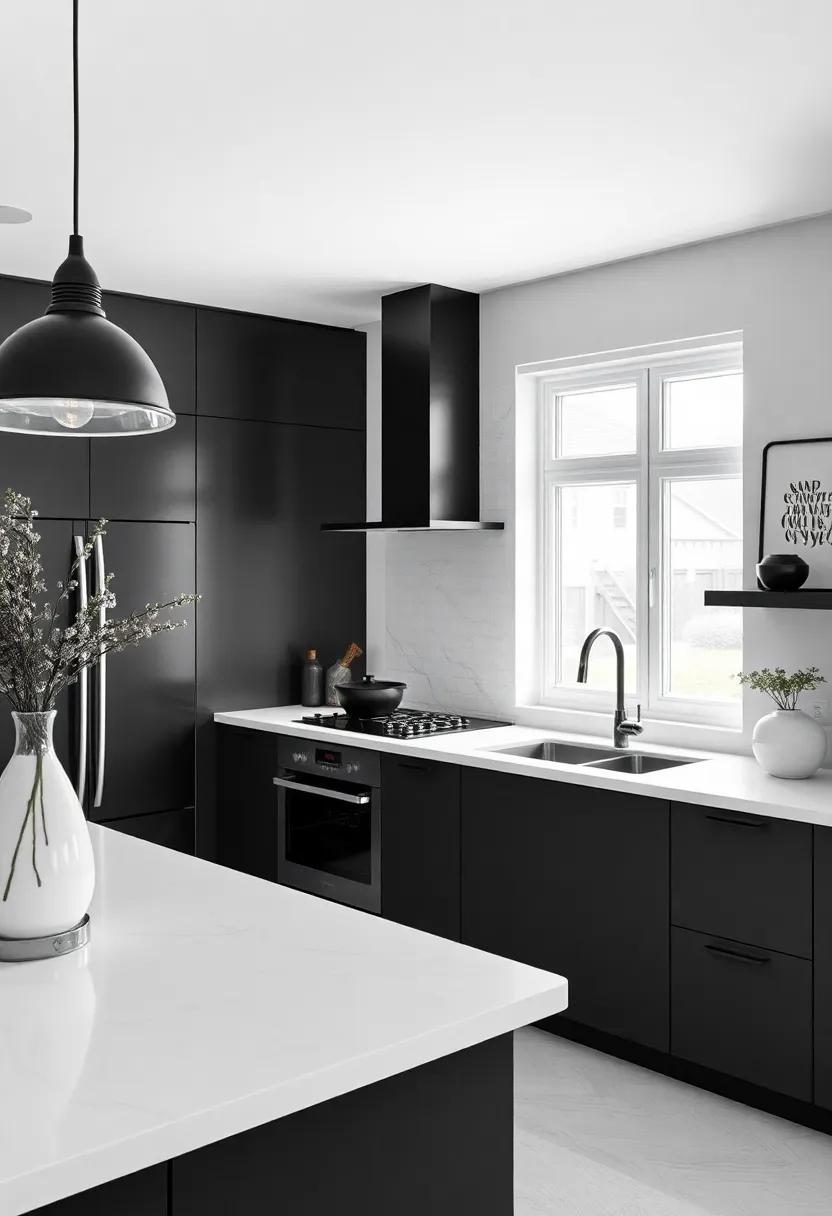
Monochrome kitchens harness the power of contrast and complementarity, inviting a sense of serenity into the heart of the home. When you combine deep blacks, rich grays, and crisp whites, the results create an atmosphere that is both dramatic and harmonious. This palette allows for endless creative freedom, enabling you to showcase a variety of textures and materials against the backdrop of a unified color scheme. By incorporating elements like sleek steel appliances,matte cabinets,and elegant ceramic tile,the monochromatic approach elevates the space from ordinary to remarkable.
Adding layers to your moody kitchen is essential, as the interplay between light and shadow can enhance the overall ambiance. Consider the following options to inject personality into your monochrome masterpiece:
- statement Lighting: install bold fixtures to create focal points.
- Natural Textures: Use wood or stone elements for warmth.
- Specialty Accents: Incorporate metallics or colored dishes to add vibrancy.
To further illustrate this design philosophy, here’s a simple table showcasing key design features:
| Feature | Description |
|---|---|
| Color scheme | Predominantly blacks, whites, and grays |
| Materials | Matte finishes, glossy tiles, and sleek metals |
| Lighting | Layered sources for depth and dimension |
Chef-Approved Layouts: Creating Fluid Spaces for Culinary Masterpieces
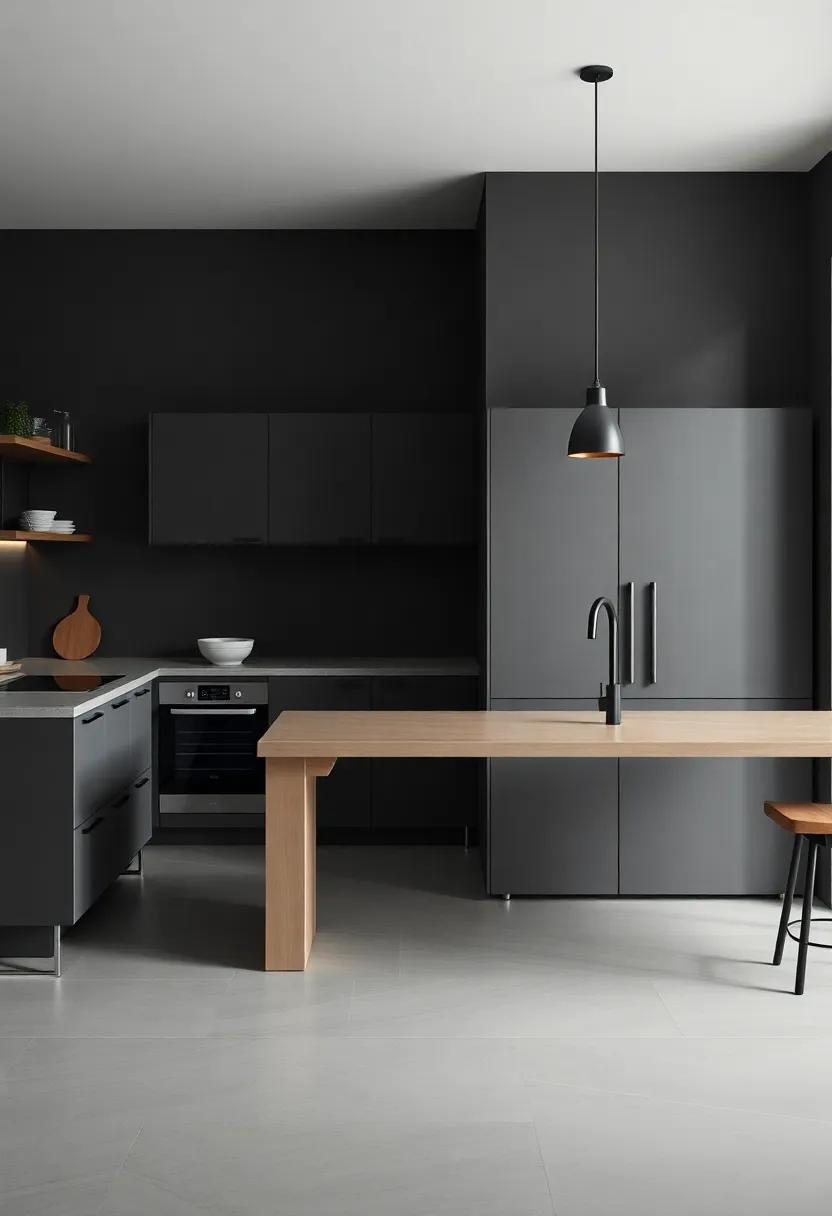
In the realm of culinary artistry, the layout of your kitchen serves as the backbone of creativity. It’s essential to consider how each element harmoniously converges to form a space that is both functional and aesthetically pleasing. A well-thought-out kitchen design flows smoothly from prep to plate,transforming chaos into a symphony of flavor. Incorporate features like open shelving for easy access to spices and tools, and strategically-placed lighting to highlight key areas while inviting warmth. Envision creating zones within your kitchen,such as:
- Prep Zone: ample countertop space paired with storage for utensils and cutting boards.
- cooking Zone: Positioned near the stove,clutter-free with easy access to pots and pans.
- Serving Zone: Close to dining areas, designed for elegance and efficiency in plating dishes.
Adopting a moody aesthetic not only enhances the visual appeal but also influences the cooking experience. By selecting darker hues with rich textures, you cultivate an intimate atmosphere that inspires culinary innovation. The strategic placement of components can elevate your cooking experience from mundane to unusual, making even the simplest meals feel luxurious. Consider integrating elements such as:
| Element | Effect |
|---|---|
| Dark Wood Cabinets | Adds depth and sophistication. |
| Exposed Brick | Creates a rustic,inviting ambiance. |
| Satin Black Appliances | Offers a seamless, chic look. |
Embracing these elements allows your kitchen to become not only a workspace but a magical realm where culinary masterpieces are born. Balancing practicality with aesthetics sets the stage for exploring flavors, enhancing creativity, and turning every dish into a statement of style.
Setting the Stage: How to Frame Dining Areas within the Moody Kitchen Aesthetic
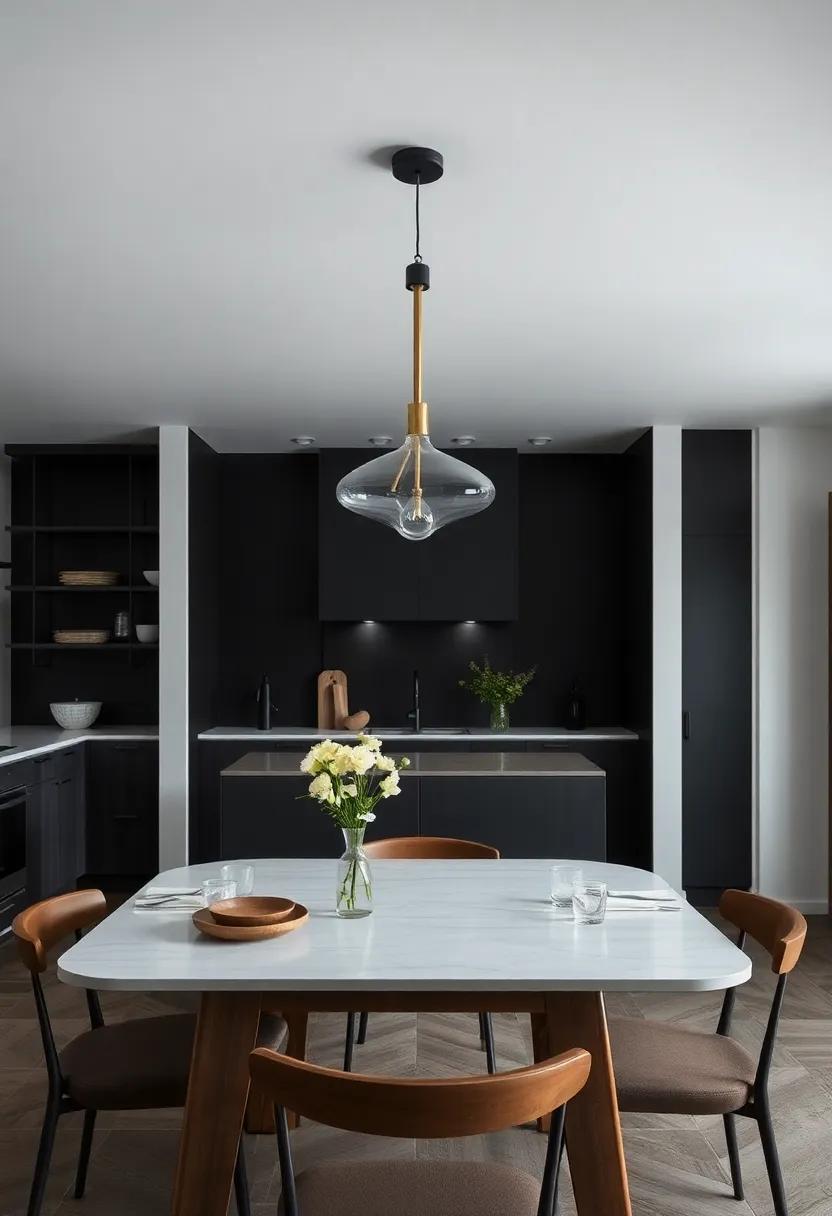
To create a harmonious dining area that resonates with the moody kitchen aesthetic, the use of color palette plays a pivotal role. Opt for rich, deep hues such as charcoal gray, emerald green, or deep burgundy for walls or feature pieces. Integrating natural materials like dark woods or metals also enhances the atmosphere,while artwork that features abstract or moody landscapes can serve as eye-catching focal points.Consider the lighting carefully; dimmable pendant lights or sconces with a warm glow can transform the space into an inviting haven during evening meals.
Another key aspect of framing dining areas within this aesthetic is the furniture selection and arrangement. choose dining tables made from reclaimed wood or with a dark finish to establish a focal point rich in character. Pair the table with upholstered chairs in velvet or other textured fabrics to create a sense of comfort. When positioning your furniture, aim for an intimate setup that encourages conversation while keeping the space open and flowing.Utilizing area rugs in understated patterns can further define the dining space, adding warmth and delineation without overpowering the overall design.
wall Art and Color: Transforming Vertical Spaces to Reflect Your Kitchen’s Mood
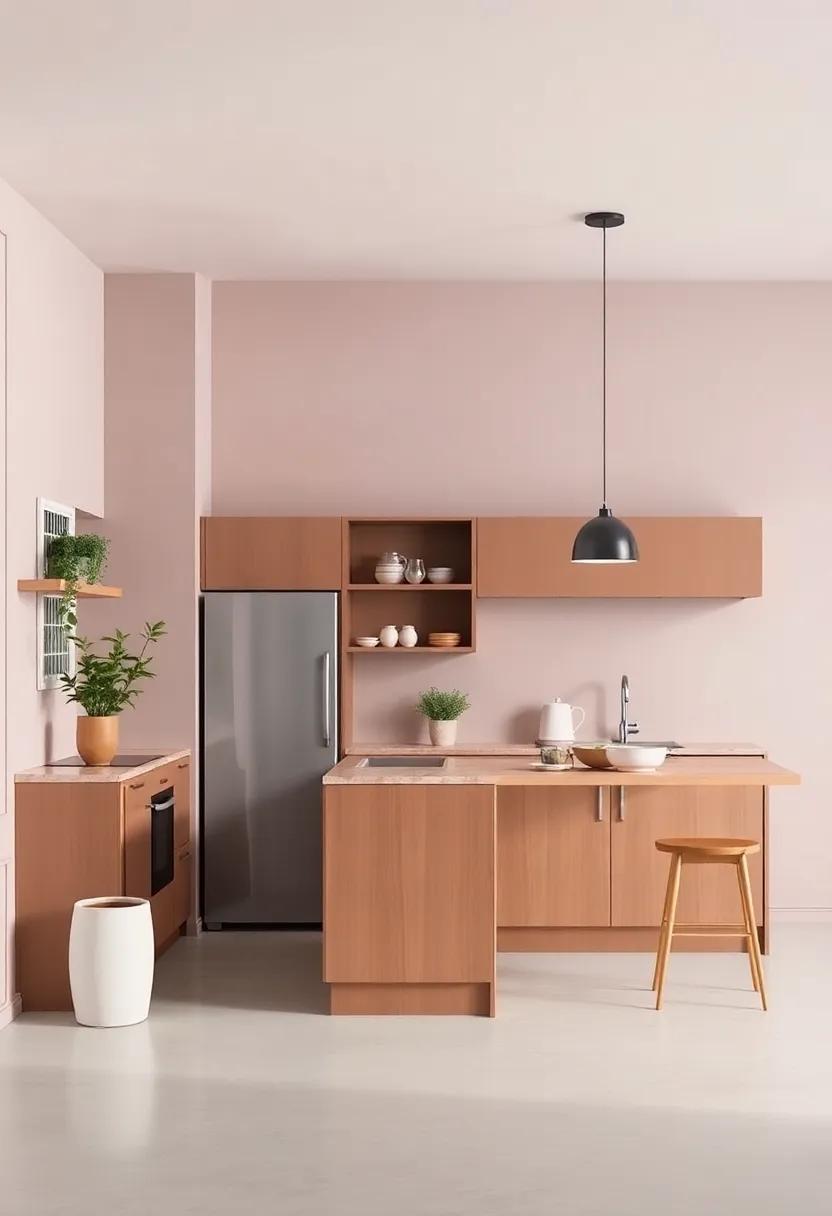
Wall art is more than just decoration; it’s a key player in establishing the atmosphere of your kitchen. Incorporating vibrant canvases, textured hanging tiles, or even framed culinary quotes can layer your space with personality and depth. Consider the mood you want to evoke when choosing colors: rich blues can suggest calmness, while warm yellows might infuse energy. Explore these options:
- Abstract paintings for a contemporary vibe
- Vintage prints invoking nostalgia
- Personal photographs to enhance warmth
Incorporate a thoughtful color palette into your wall art to create a cohesive look that interacts with the kitchen’s functional elements. A smooth blend of hues can draw attention to your culinary space while fostering an inviting environment. Consider using a color-matching chart to visualize the harmony between your art pieces and the existing decor:
| Art Color | Kitchen Accent | Effect |
|---|---|---|
| Deep Red | Dark Wood | warmth and Intimacy |
| Soft Green | Metallic Fixtures | Freshness and Calm |
| Bold Black | Bright White | Modern and Chic |
Seasonal Decor Changes: Adapting Your Kitchen Aesthetic throughout the Year
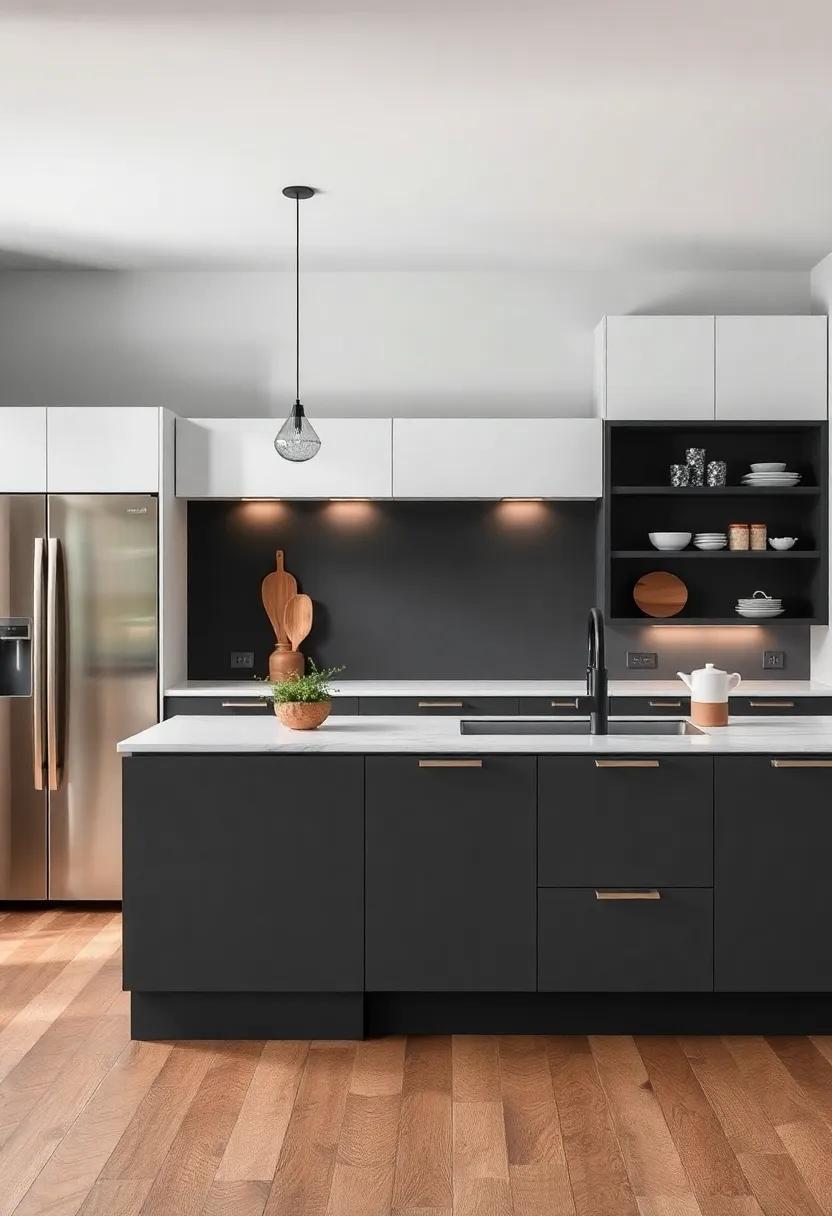
As the seasons change, so too can your kitchen’s color palette and accessories, allowing for a seamless flow between the indoors and outdoors. In the brisk days of autumn,consider incorporating earthy tones and rustic accents; think of deep orange table linens,copper pots,and wooden serving boards that evoke the essence of harvest time. Winter brings opportunities for a cozy feel, with rich jewel tones, warm candlelight, and perhaps a touch of festive flair through garlands or evergreen centerpieces. In contrast, spring calls for bright whites and pastel hues, adorned with fresh flowers and ceramic dishware that reflect the new life blossoming outside. Summer, on the other hand, is the perfect time to embrace vibrant colors, citrus decor, and airy textiles that allow for a breezy atmosphere, making the kitchen a fresh gathering spot.
Maintaining a moody aesthetic throughout these transitions can create an inviting and dynamic atmosphere.Achieve this balance by incorporating seasonal elements without overwhelming the space. utilize simple decor changes such as:
- Switching out dish towels and oven mitts to coordinate with seasonal colors.
- Refreshing wall art or prints to reflect the time of year.
- Incorporating seasonal produce as a part of your countertop display.
Additionally, consider an interactive kitchen calendar that adapts to the seasons, allowing for a rotation of decor ideas based on holidays or local seasonal celebrations. A simple table can definitely help you brainstorm ideas for decor swaps throughout the year, keeping your culinary hub both functional and stylish.
| Season | Color Palette | Decor Tips |
|---|---|---|
| Autumn | Earthy tones | Rustic table settings |
| Winter | Jewel tones | Candlelight and greenery |
| Spring | Pastel hues | Fresh florals |
| Summer | Vibrant colors | Citrus accents |
Creating a Cozy Nook: Designing an Inviting Space within Your Kitchen
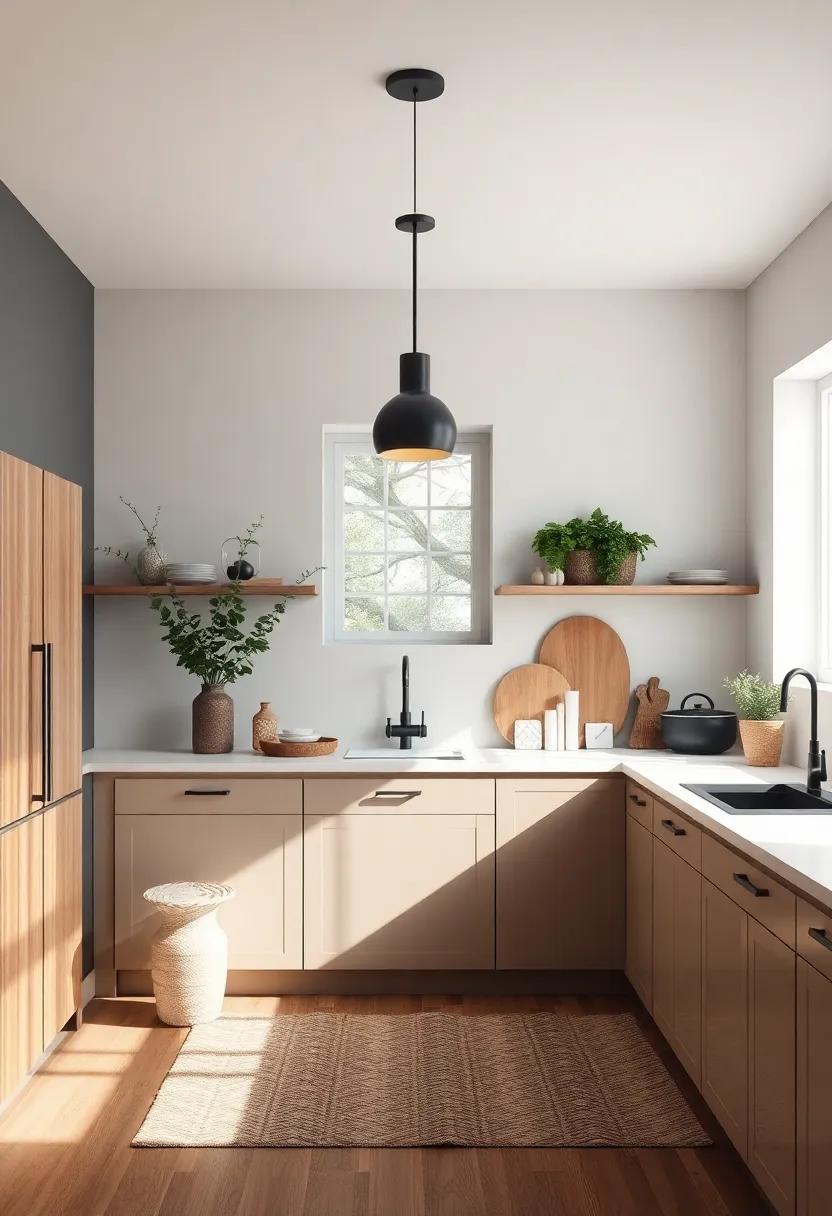
To create a truly inviting nook in your kitchen, focus on selecting elements that evoke warmth and comfort.Start with a cozy seating arrangement that encourages relaxation, such as a cushioned bench or a couple of soft armchairs nestled near a window. Layer your space with textiles that invite touch—think plush throw pillows and a cozy blanket draped over the side. Enhance the ambiance by incorporating warm lighting options, such as pendant lights with a soft glow or vintage-style string lights that create a magical atmosphere. Don’t overlook the power of natural elements; a small potted herb garden or a vase of fresh flowers can infuse life into your corner.
In terms of color and decor, opt for a palette that reflects cozy tones such as deep greens, rich browns, or soft creams to maintain a serene environment. Use walls or accents to tell a story by displaying your favorite cookbooks or family recipes in elegant frames. Consider incorporating a small table that serves as a multifunctional space for morning coffee or evening discussions.Here is a simple guide to help you pick the right elements:
| Element | Description |
|---|---|
| Seating | Comfy chairs or a cushy bench for relaxing |
| Textiles | Throw pillows and blankets for warmth |
| Lighting | Soft and warm illumination for a cozy vibe |
| Natural Elements | Potted plants or fresh flowers for vibrancy |
Captivating Backsplash Ideas: Defining Character with Stunning Visuals
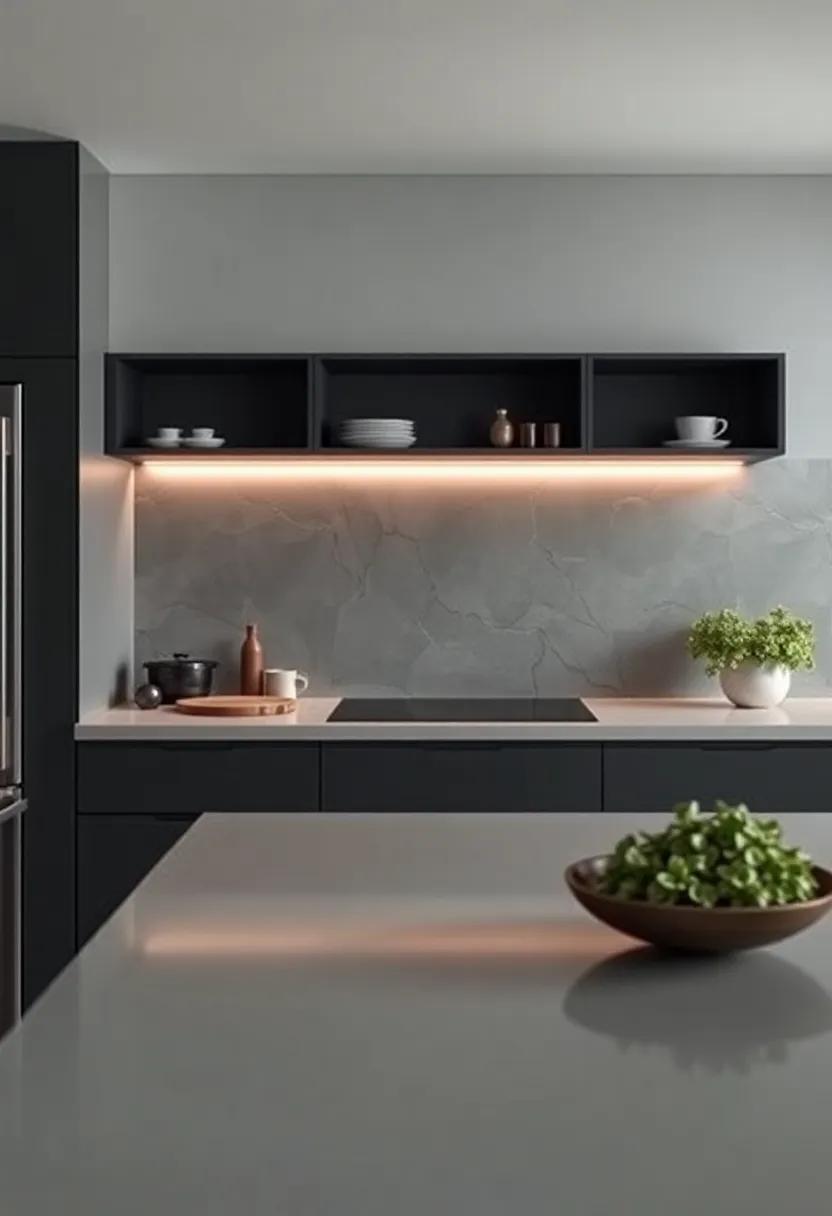
For those looking to add depth and intrigue to their kitchen, a striking backsplash can serve as the perfect canvas for artistic expression. The allure of rich, dark colors paired with mixed materials can bring a touch of sophistication and warmth. Consider these options for a captivating design that speaks to the moody kitchen aesthetic:
- Matte Black Tiles: Create a bold statement with sleek, matte black tiles that absorb light, adding a sense of drama.
- textured Stone: Incorporating rough-hewn stones can introduce organic elements that contrast beautifully with modern appliances.
- Deep Jewel Tones: emerald green or sapphire blue glass tiles can reflect light and complement brass fittings for a luxurious effect.
To balance the rich visuals, consider the layout and finish of your backsplash. A herringbone pattern not only enhances visual interest but can also help guide the eye throughout the space. Playing with mixed media can further enhance this captivating aesthetic:
- Wood Accents: Adding reclaimed wood elements can bring an earthy touch to the vibrant tiles, creating harmony.
- Metal Trims: Edging with brass or copper can introduce a reflective quality that elevates the overall design.
- Geometric Designs: Incorporating tiles in unexpected shapes adds flair and a unique personality to the kitchen backdrop.
Wrapping Up
As we conclude this exploration of the moody kitchen aesthetic, it becomes clear that this design philosophy transcends mere decor; it’s an invitation to partake in a sensory experience. The interplay of shadow and light, coupled with rich textures and deep hues, transforms the kitchen into more than just a functional space—it’s a canvas for creativity, a sanctuary for culinary exploration, and a backdrop for memories waiting to be made.
Embracing the enigmatic allure of a moody kitchen allows you to redefine the heart of your home, nurturing a space that reflects your unique taste and personality. Whether you’re drawn to the dramatic contrast of dark cabinetry, the warmth of rustic elements, or the sleek sophistication of modern finishes, the possibilities are endless.
As you embark on your journey of transformation, remember that the essence of a moody kitchen lies not only in its aesthetic appeal but also in its capacity to evoke emotion and inspire connection. So, roll up your sleeves, let your imagination run wild, and create a space that resonates with the energy of who you are. After all, a kitchen is more than where you cook; it’s where life unfolds, and the stories of family and friends are woven into the fabric of everyday moments. Happy designing!

